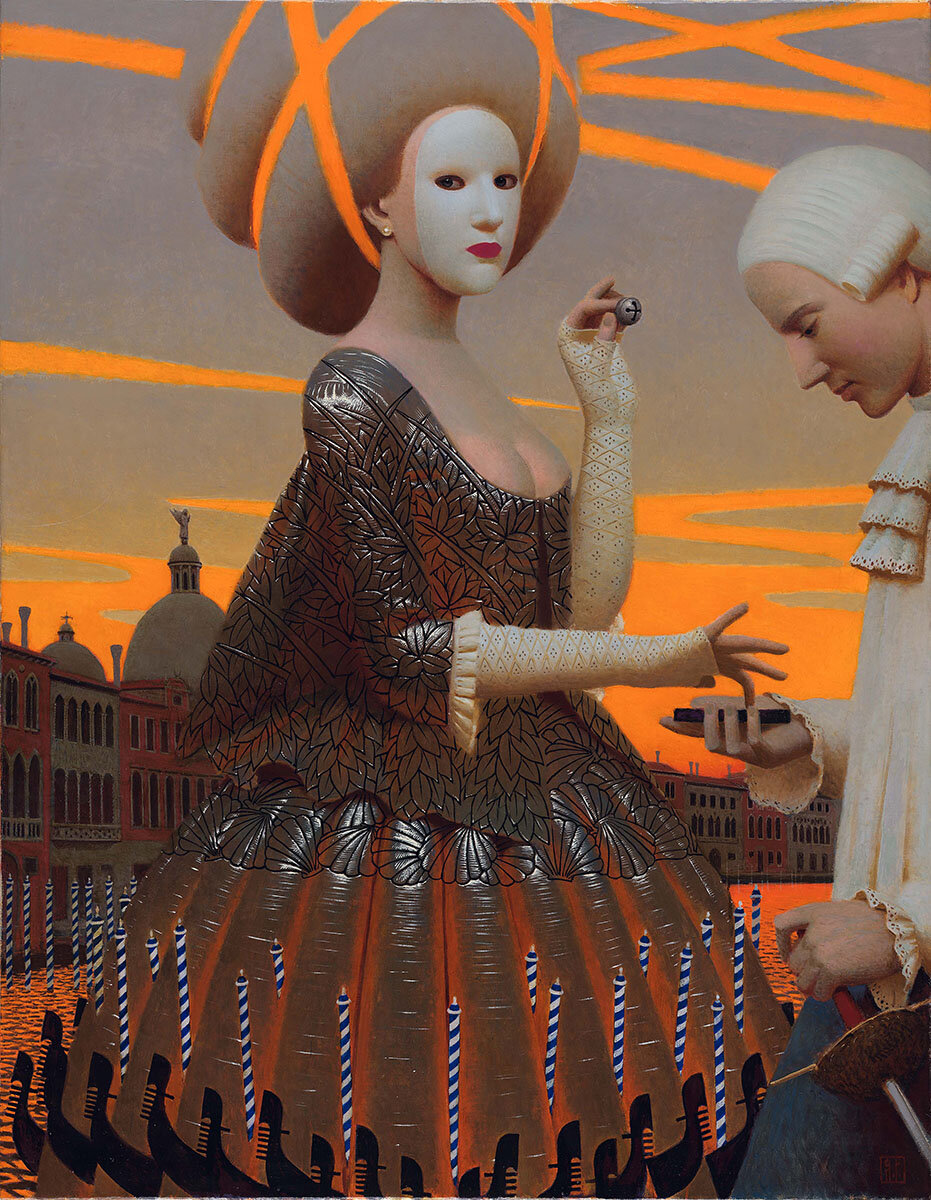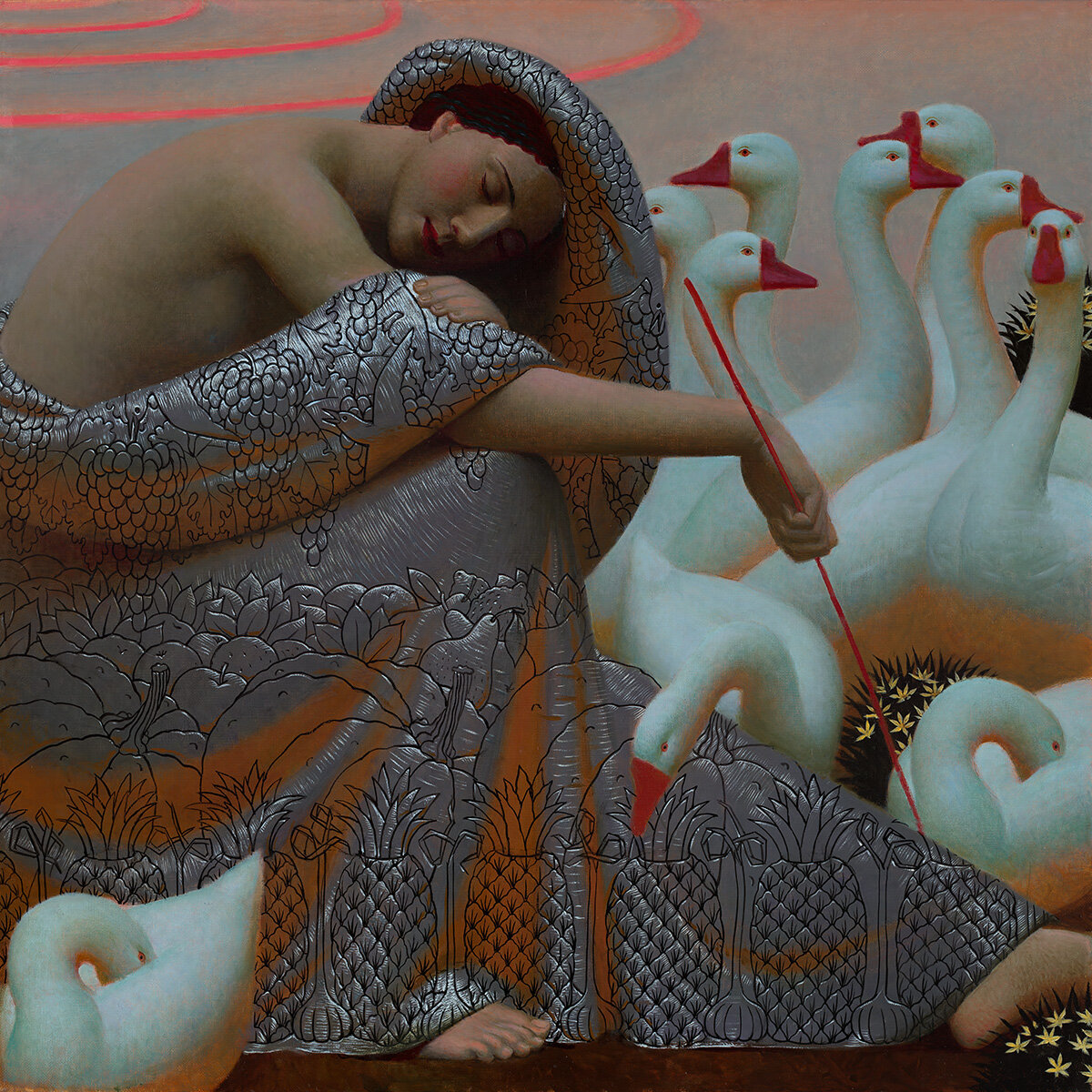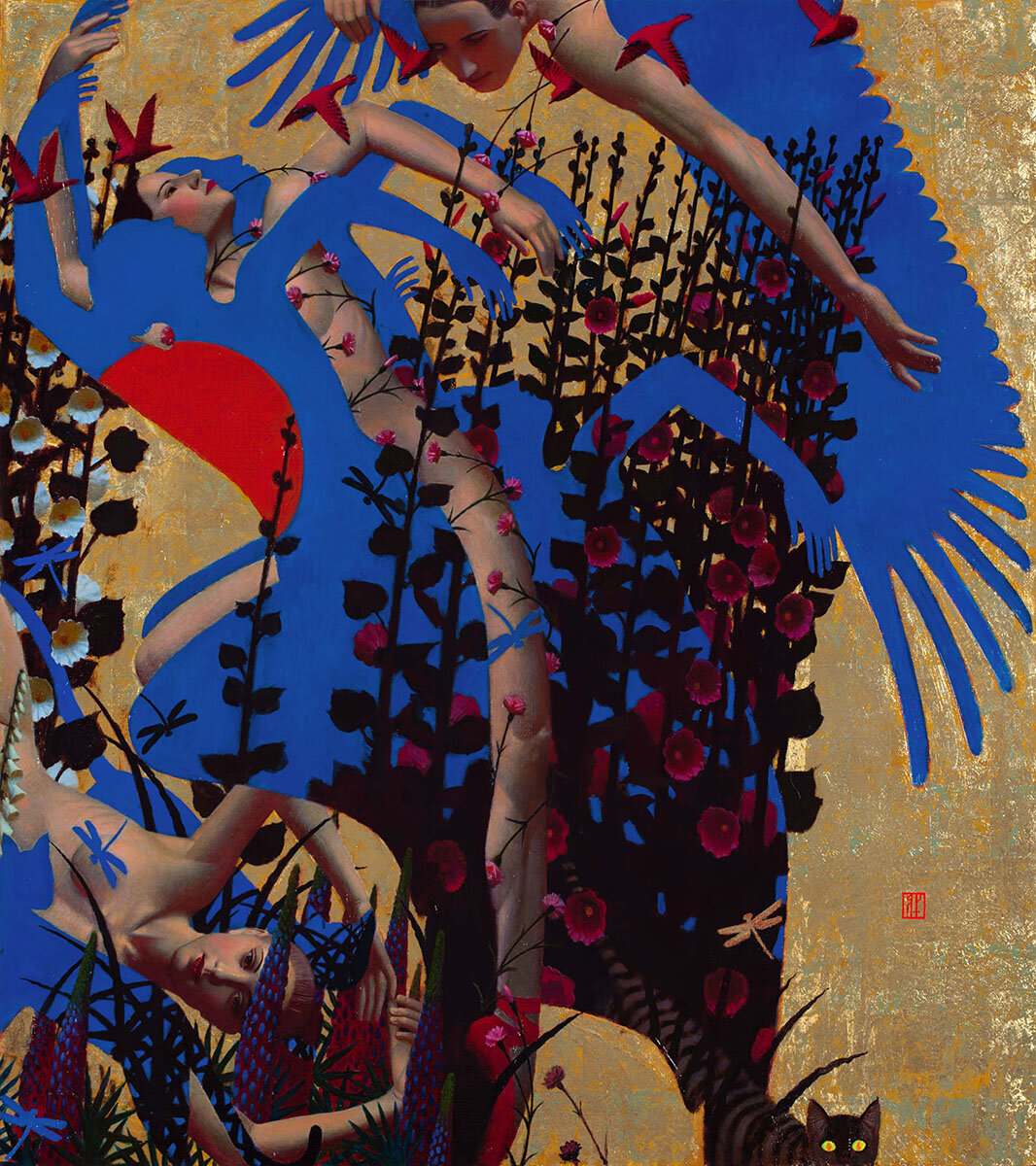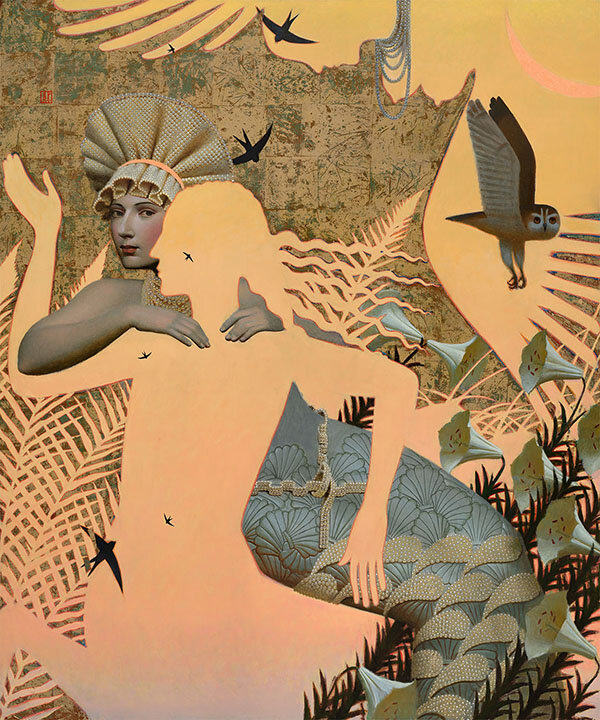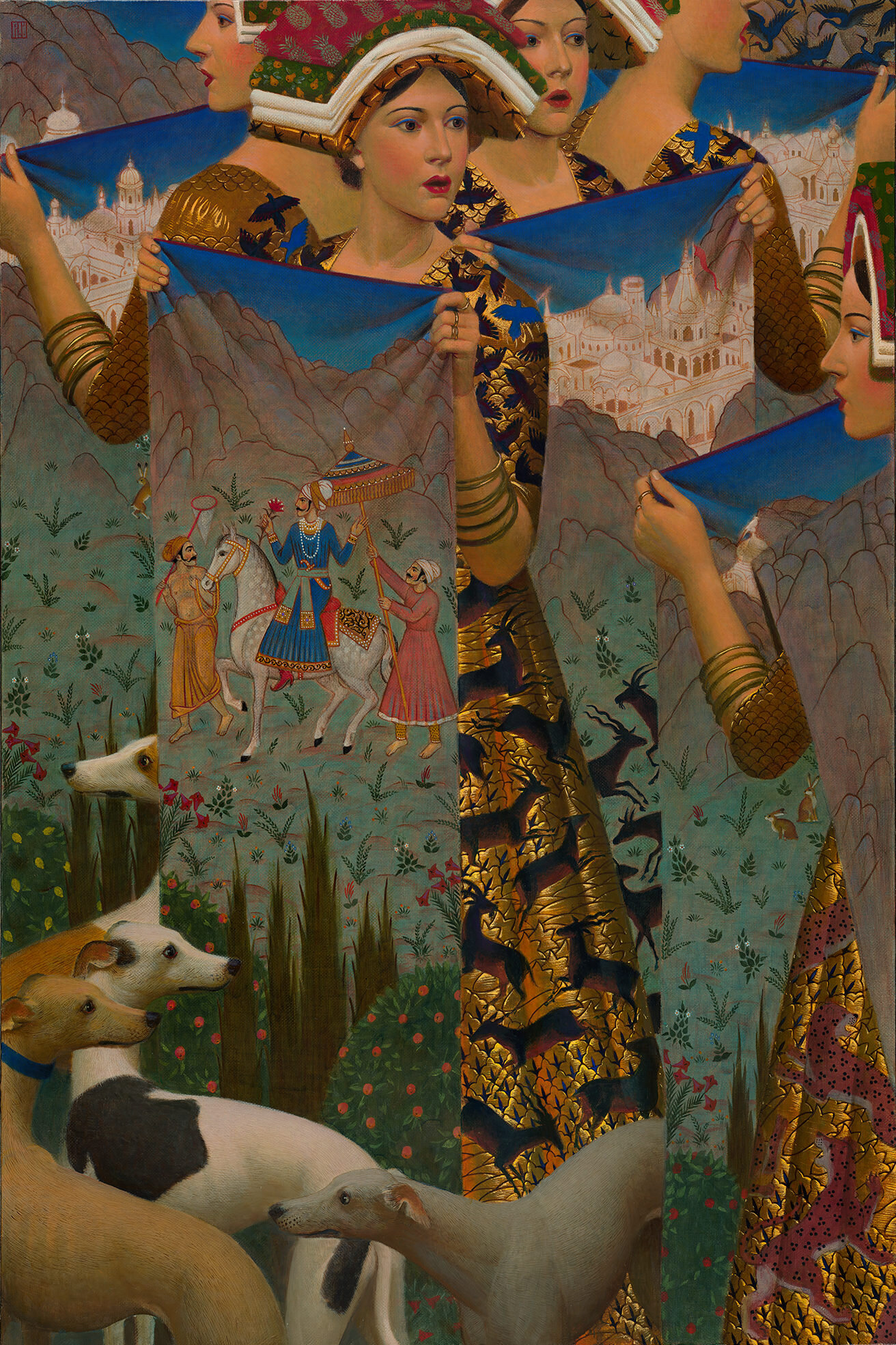Elina Raincorn
Saint-Petersburg based digital artist working mainly with self-portrait photography manipulation by delivering new captivating image every week (or at least she promised that :)

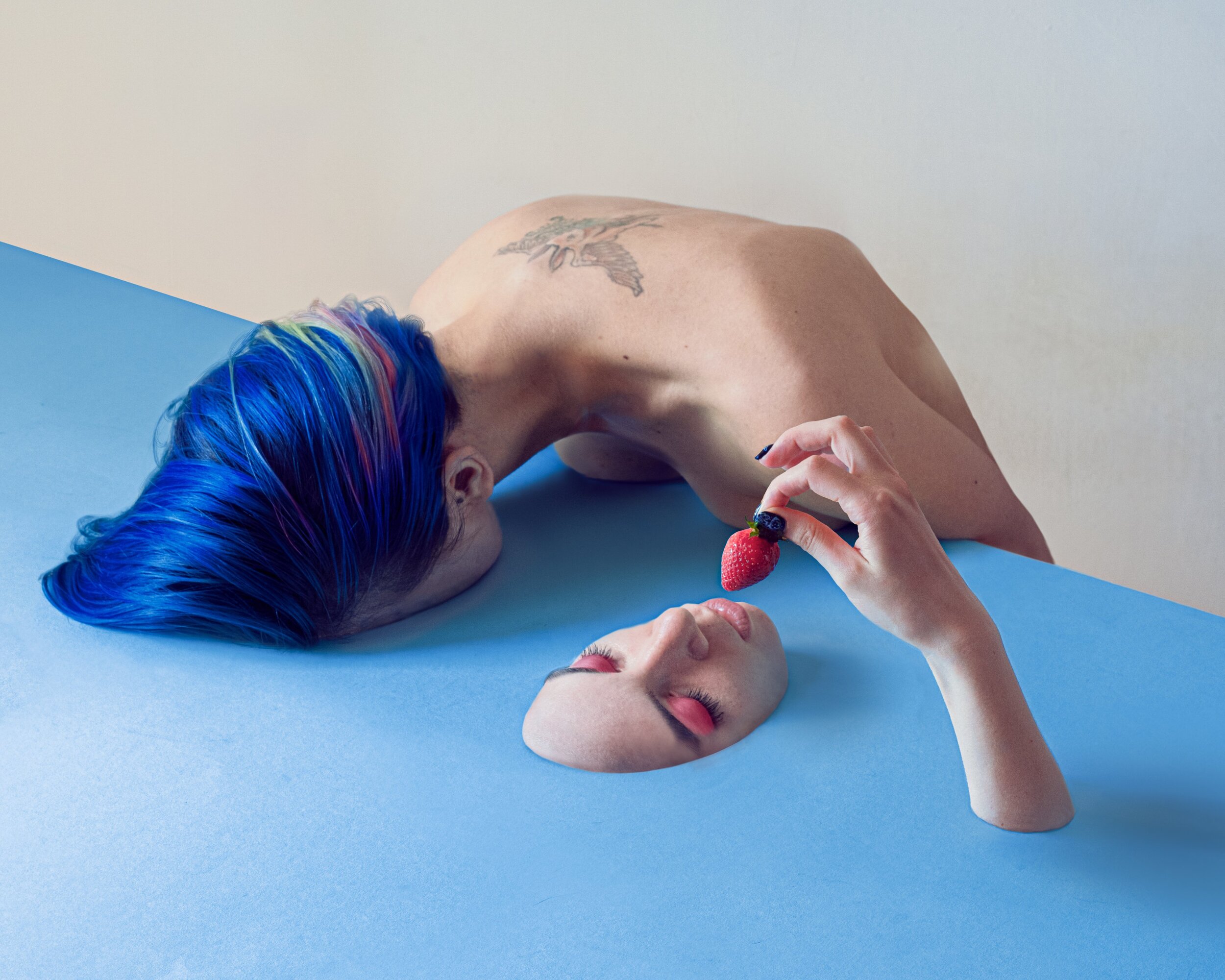
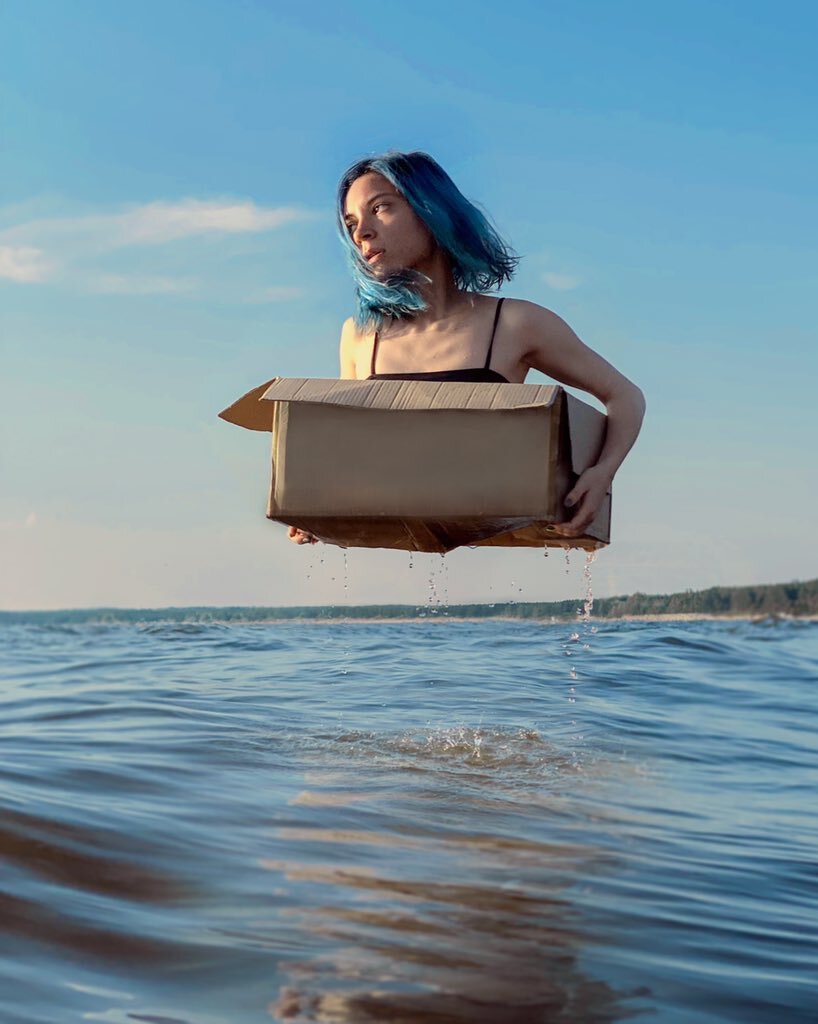
Saint-Petersburg based digital artist working mainly with self-portrait photography manipulation by delivering new captivating image every week (or at least she promised that :)
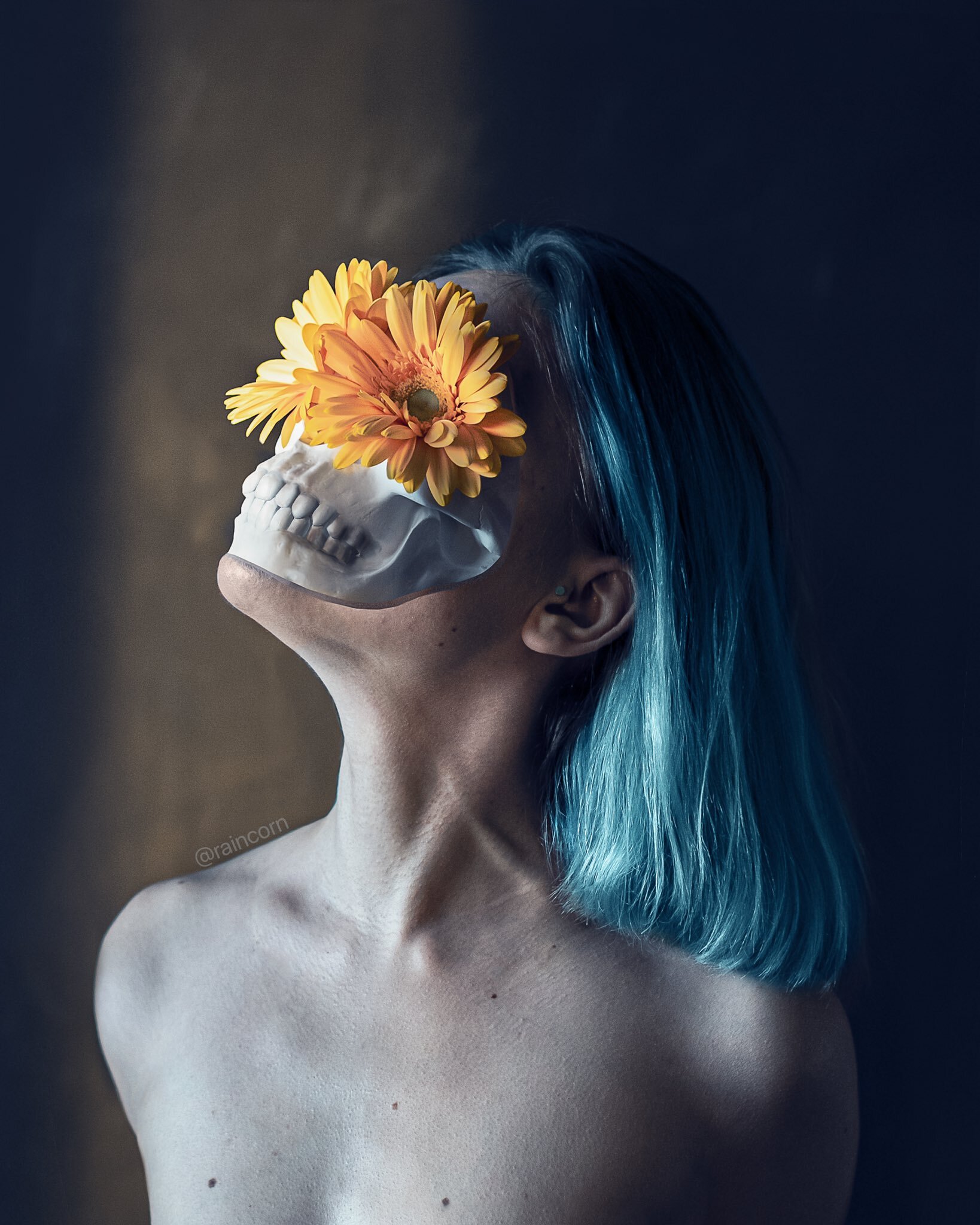




What is “distant”, “unknown” and “amazing” for us, what could you describe in such words? Most often we think this way or talk about two things: about the future and about space.
Same things we can also say about the art objects created by the modern artist and sculptor Vasilisa Lipatova. On the one hand, it is because the artist works with these two themes - “space” and “future” and creates them in her objects. On the other hand, it is because the techniques that the artist develops to create her works cause delight among the audience and great interest among professionals. And, finally, the emotions that the works bring are emotions of joy, surprise and delight, just those that we experience when we come into contact with something “distant”, “unknown” and “amazing".
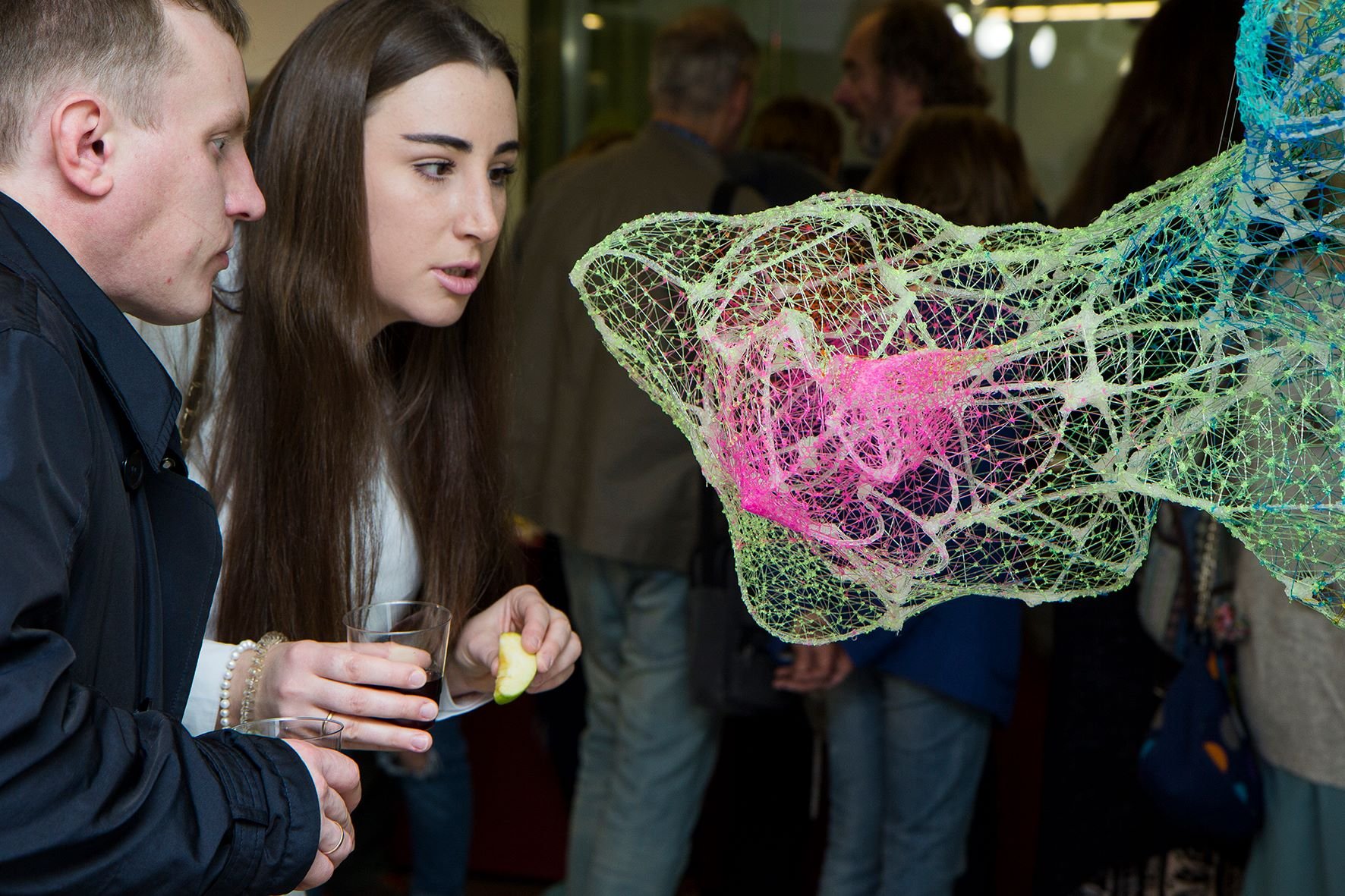
Let's sort it out in order.
So, “Space" - how can you create art objects in the form of space, in volume?
Sculpt round planets and hang them from the ceiling?
Or cut it out of some material and put it on a pedestal?
Perhaps this would be the most obvious option, but as we said above - the artist likes to invent and develop her own techniques for creating art objects. The main technique in which all the interior art objects of the artist are created is called “manual 3D printing". This is a meticulous and delicate work with molten plastic thread, which allows you to “weave” three-dimensional aerial art objects almost literally in the air. And also to create flat canvases with three-dimensional elements on their surface - literally to imprint space in space and material.

It was exactly these artworks that made the artist famous and exactly these works caused such delight and such surprise among the audience.
And it was thanks to the development of this technique that the artist began to create both exhibition objects that are included in museum collections (for example, one of the artist's works was included in the collection of the State Tretyakov Gallery) and small interior canvases that literally anyone can buy and hang at home, and thus not only touch art, but literally become involved in the international project of the artist “Space Atlas".

And also to make a profitable investment - every year the merits of the artist are literally growing before our eyes, and at the same time the works themselves are becoming more expensive.
Moreover, it is worth noting that the artist has entered the world art market and her international career only adds “advantages” to the main achievements.
It’s just enough to google “Vasilisa Lipatova” to see how many publications the artist has in different media.
Or you also can read her CV and see her participation and victory in international and All-Russian competitions, diplomas with first places from different years, as well as international exhibitions of such a level as the Biennale.
Separately, it is worth talking about royalties, the artist's works created specifically for a large circle of connoisseurs start from $ 100 - $ 300, this is done specifically so that a large number of people can easily afford to buy the artist's works. But at the same time, her royalties for the development of projects start from $ 5,000 and often $ 10,000, which significantly exceeds the average market prices, where the artist is often offered to develop a project for $ 1,000 - $ 500 dollars or even do it for free.
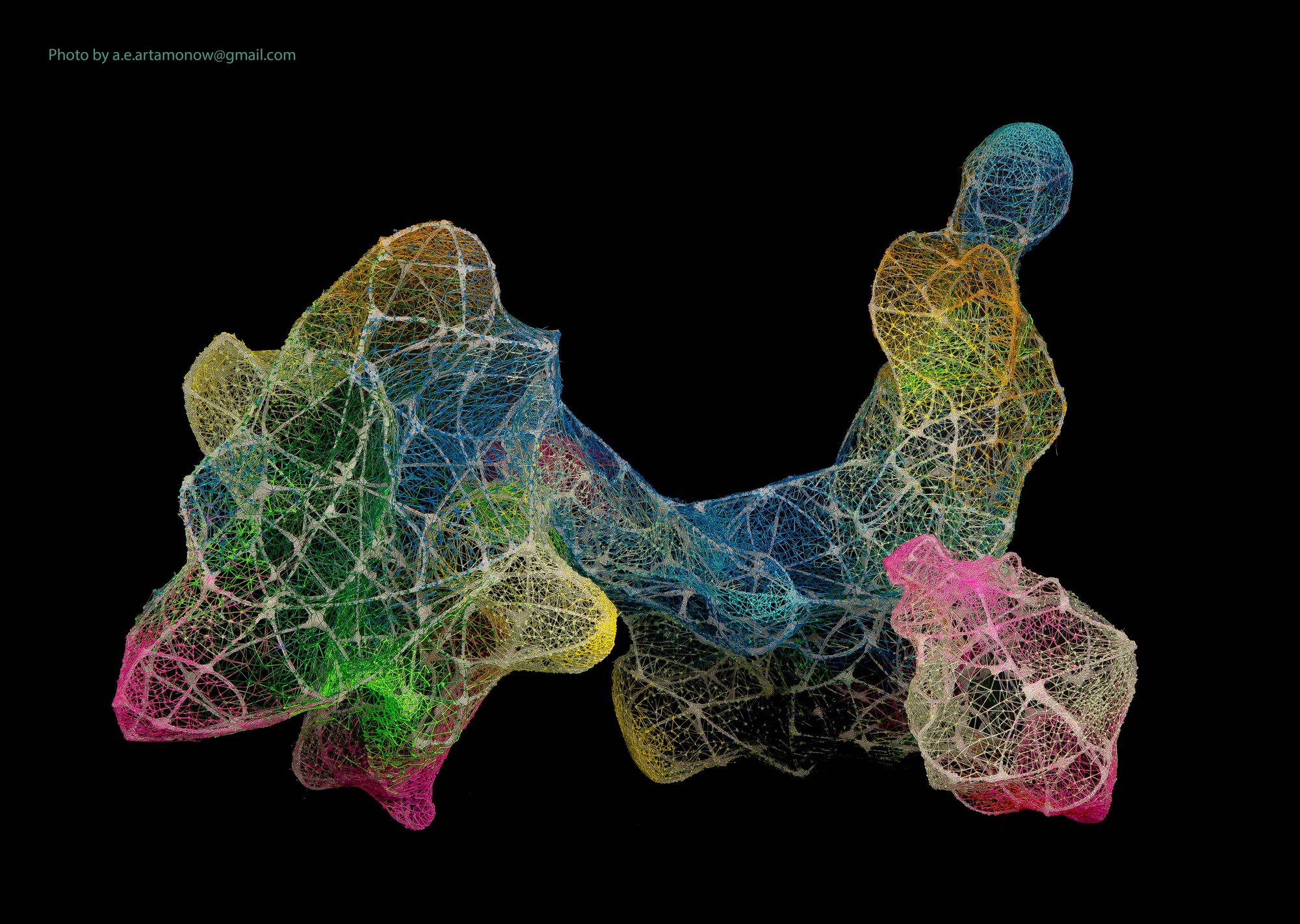
The project “Space Atlas” became for the artist another step in the arena of world fame and demand, in one year it grew from a small town project to an international one, several objects were included in museum collections, and one of the objects received the support of the Ministry of Culture of the Republic of Buryatia - the object “Legends of Baikal" became the first public art The object was located in the capital of Buryatia, the city of Ulan - Ude and immediately entered the collection of the most prestigious museum of the Republic - the TS Sampilov National Museum.
We will continue to observe the dizzying career of the artist, and we will continue to keep you informed about her new takeoffs and Space projects.

Gregory Orekhov’s “Crossroads,” made of polycarbonate and painted over with marking paint, is a crossing across the river, among fields which seemingly have no end. This land art object is located in the Moscow region, in the area of Nikolina Gora. With this work, the artist raises the question of social, ethical and environmental behaviour.
The 21st century has faced itself with acute problems of capital constructions, which contradicts the basic principles of urbanism and summons a lot of controversy and discontent among local residents. In pursuit of non-ecological development of the economy, the authorities allow more and more ground to be built upon, the nature of which is illegally destroyed for the purpose of self-gain without any clarity or thought.
“Crossroads” is an attempt to turn the world's attention towards heritage preservation and to remind people about the ability of choice. Gregory Orekhov stands at the crossroads between the quiet, foggy natural world and an impending catastrophe. The object is situated at the intersection of historic events that took place here at the time of the Second World War, and those that are yet to come.
This installation is not a personal reflection, more so, it is something that each of us encounters on a daily basis. This is about the unrestrained transformation of the space around, because of which, tomorrow, we can forever lose memorial places, favourite
Photography by Konstantin Antipin and Ilya Ivanov
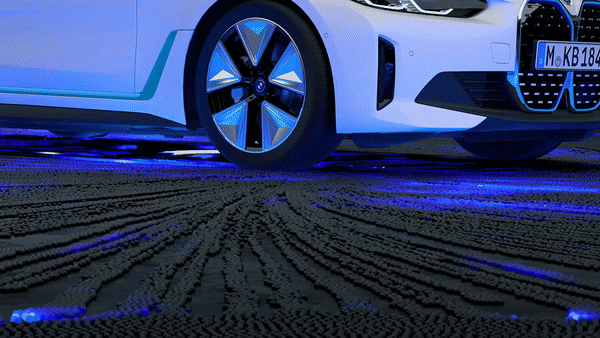
A new reality
by Maxim Zhestkov
To celebrate the reveal of the new all-electric BMW i4, BMW invited Russian media artist Maxim Zhestkov to freely interpret the new vehicle, and create a series of digital artworks using the BMW i4 design and technology as his inspiration. The result is a series that is as mesmerising as it is unique.
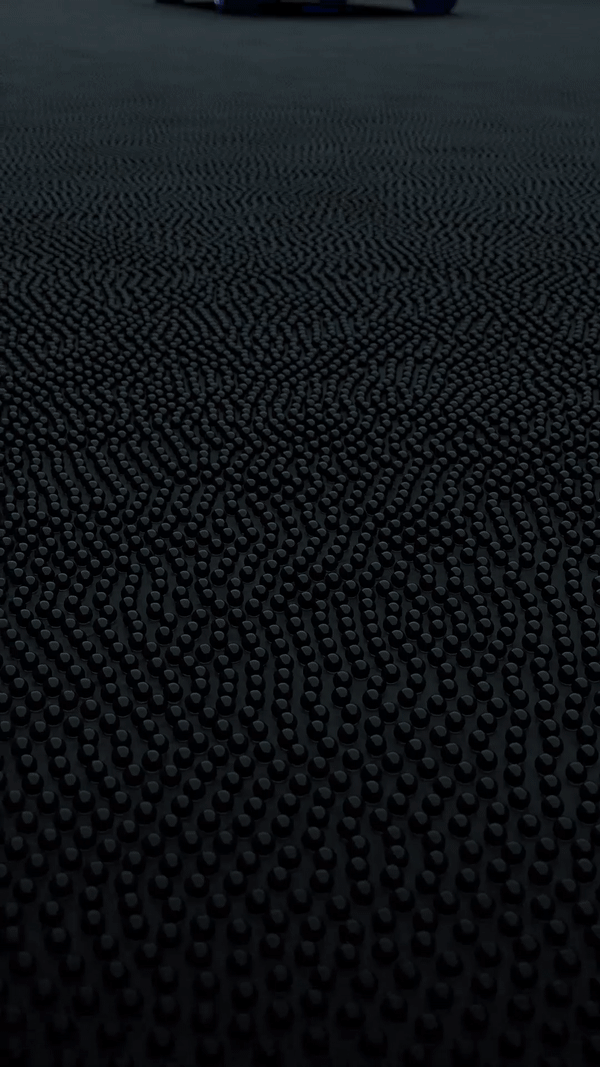
“I started out studying traditional architecture, but somewhere down the road I came to realise that the 3D software we used for mapping and modelling had so much more potential. It felt like it was being used to create the final product or output, and then… the process was seen as over. It was very finite, and it just didn’t sit right with me. But then I saw that, in fact, the software, if I found a way to use it right, could become much more. It could be used to discover and experiment in ways that didn’t have a goal in itself. It could be the way itself; the means to explore .something new and unexpected.”
Zhestkov describes this realisation as a process of “personal and creative liberation.” By plugging into the ever-evolving and ever more advanced visualisation and rendering software he had available, he was able to explore spatiality, physics, visuals and mathematics in a way he hadn’t thought possible. He quickly became hooked.



Russian artist Roman Casus explores conflicts, politics, nudity and anonymity. Painting allows him to impart these digital phantoms with a substance.

“I observer the digital stream. The modern content delivery methods such as instant posting and live broadcasts, allow viewer to be in the epicenter of events without physical participation. I construct my own stories based on these impressions. Painting allows me to impart these digital phantoms with a substance.
Sketches for my works are assembled from digital artifacts. I produce digital manipulations with fragments of news, videos, and live broadcasts. I combine contradictory elements to deconstruct the original narrative.
While creating painting I combine figurative and abstract painting. Elements of realism make works plausible. But random deformations, cropping of forms, breaking of space, and color distortions make the interpretation almost impossible. Each fragment dissolves its meaning within the frame. Blurring one image into another, one narrative into another, one way of seeing into another. Stories behind these forms capture the unpredictability and redundancy of reality.”
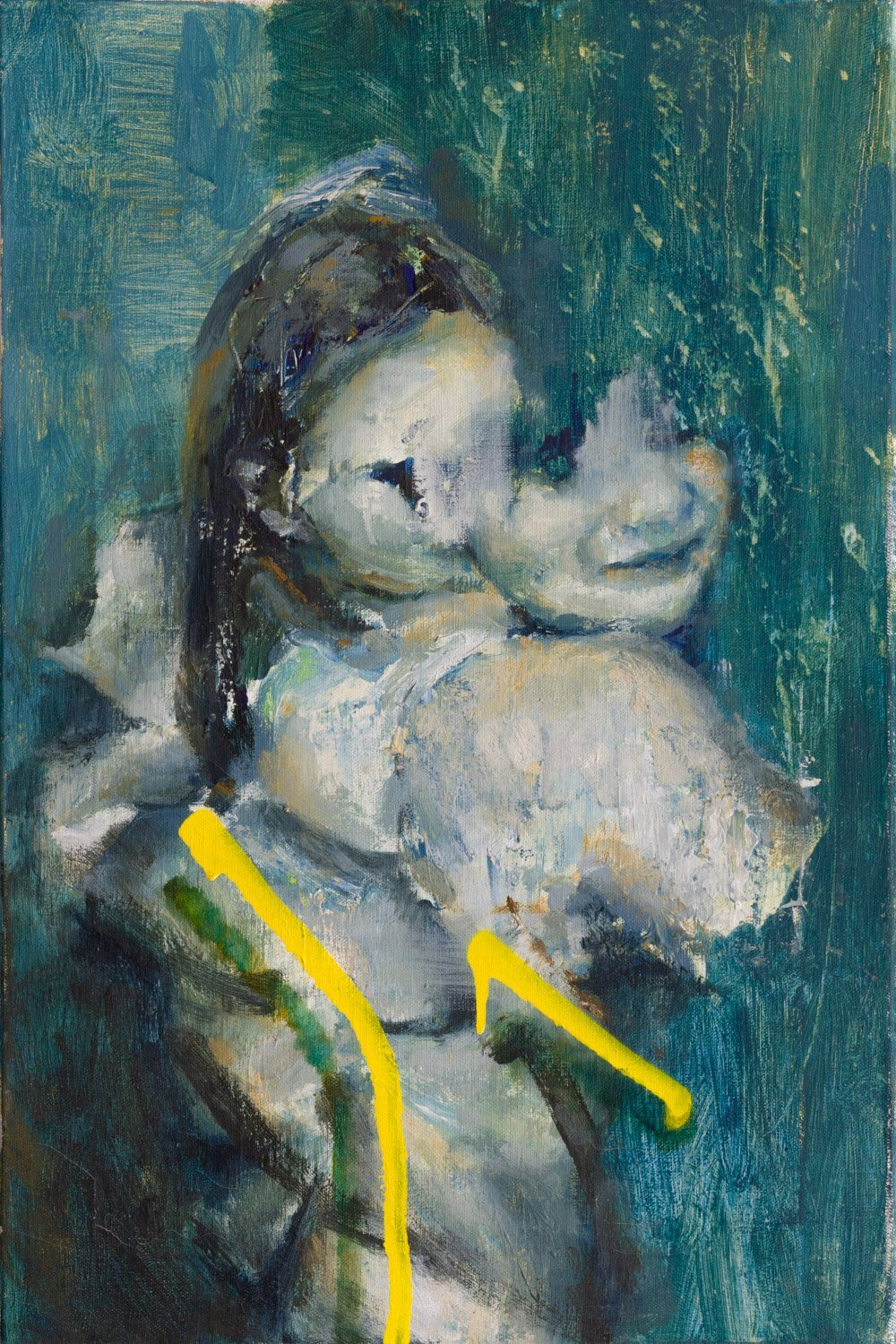
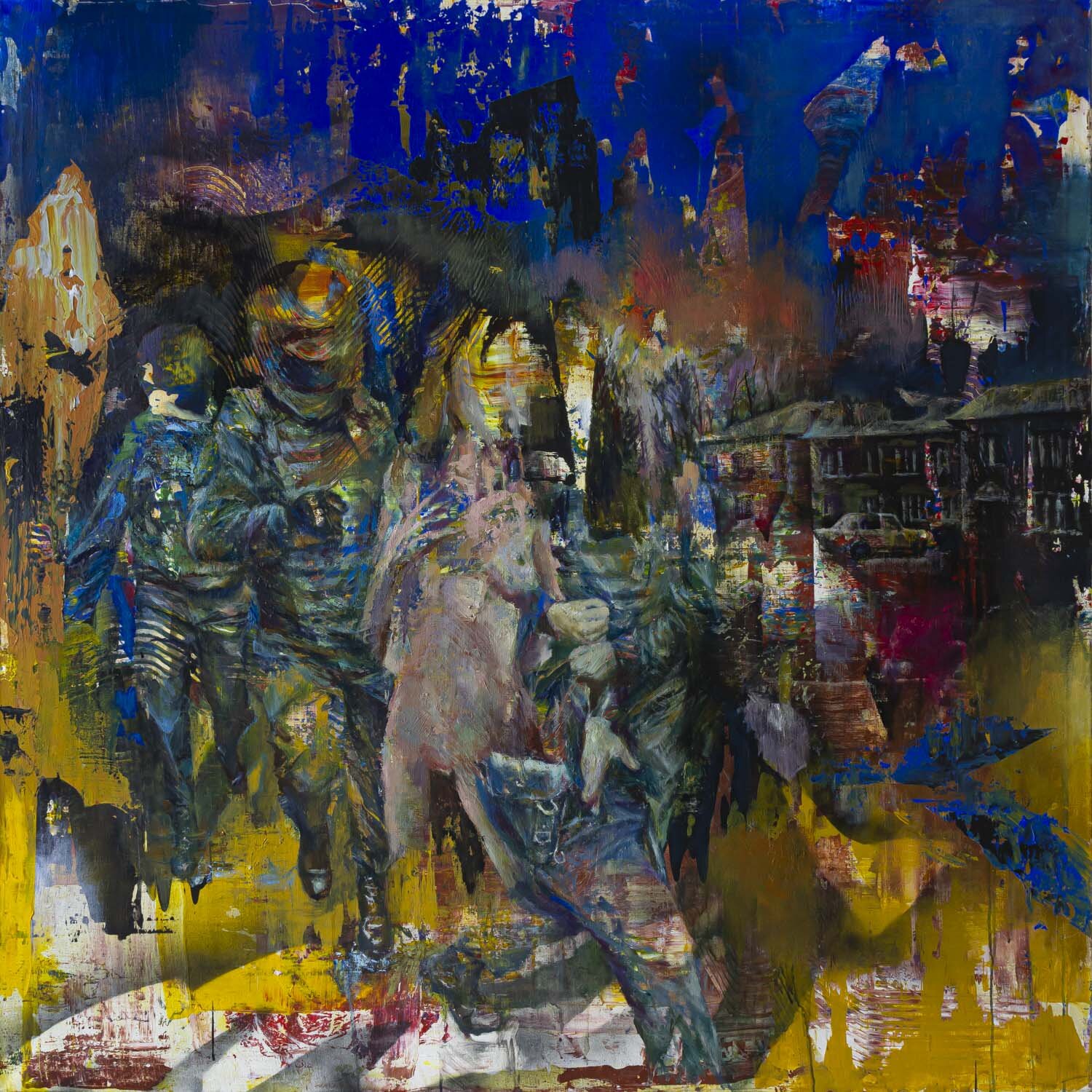
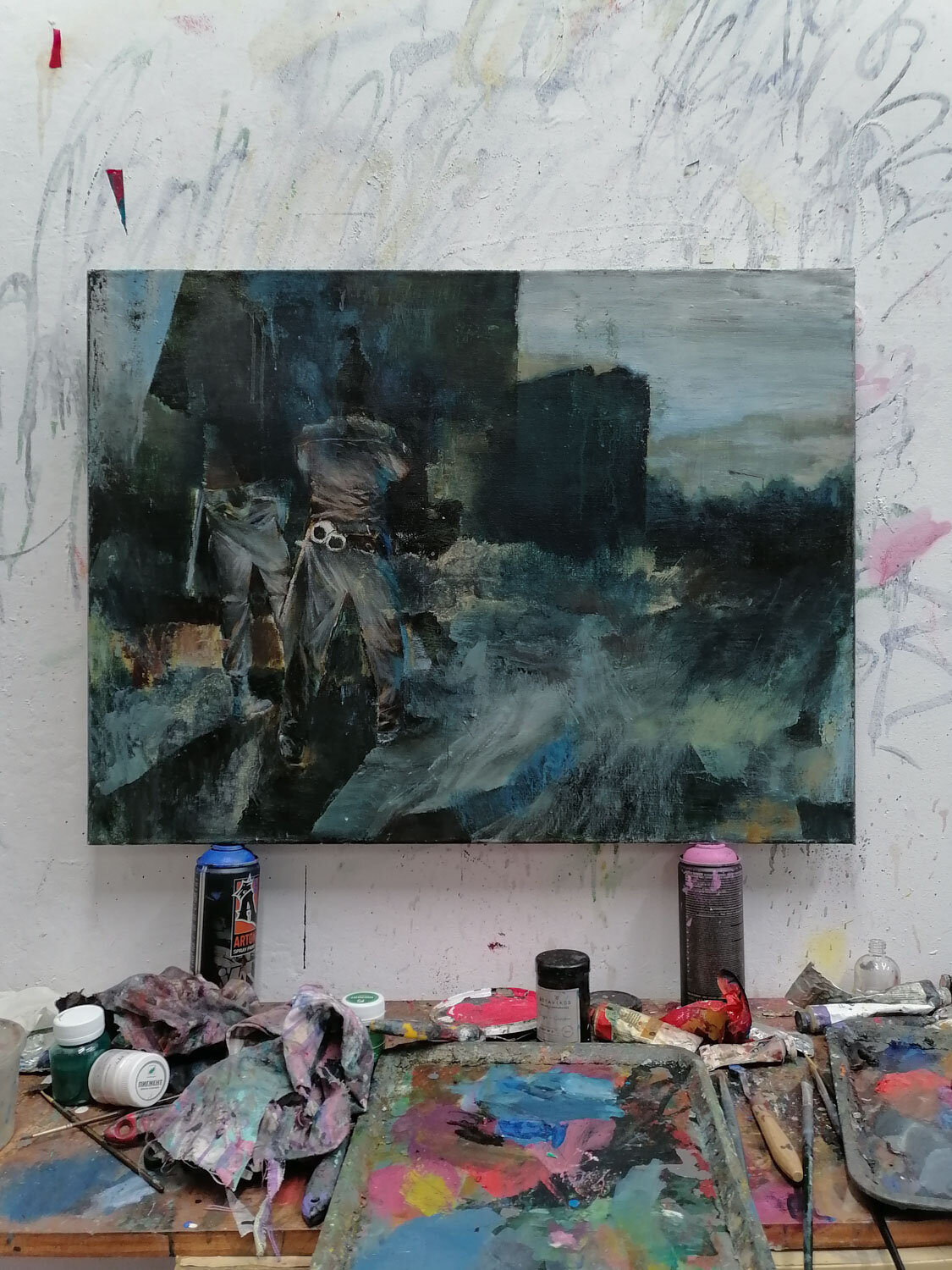
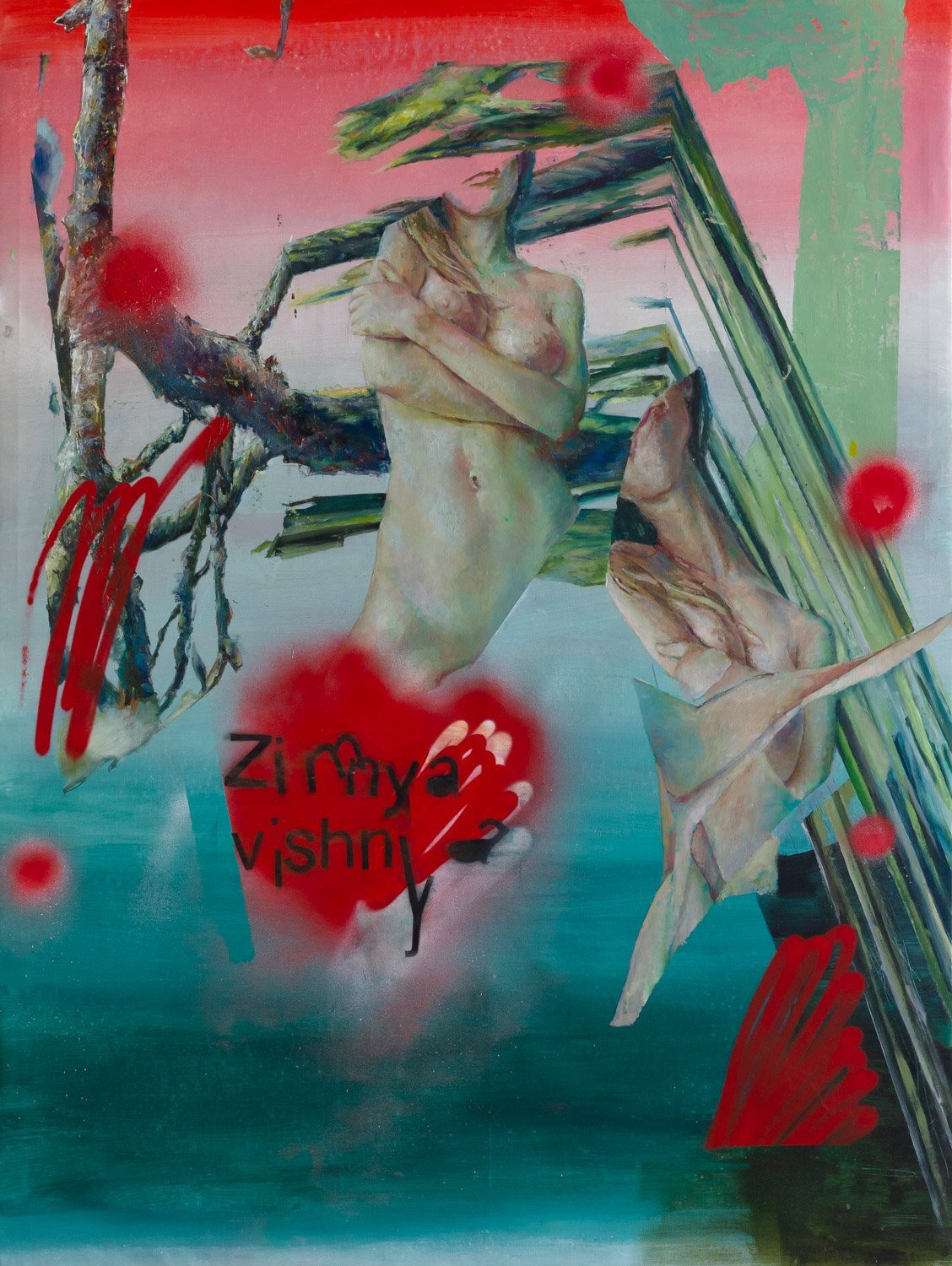
Modern video art is a video that is based on the latest technology. With 8K Super UHD resolution, the video art has huge image detailization. Dynamic range allows you to see details even in the night scene, while not losing the details of bright neon lights. The Rec.2100 color space provides the video artist with colours previously unavailable in other visual arts.

Finding artistic beauty in an urbanized landscape is what inspires Andrey Denisyuk to create his video art of the City of the World. To create this video art, Andrey traveled across three continents and continues to create cycles of these videos. Previously, Andrey's works were shown at the IFA exhibition in Germany and CES in Berlin. The color solution, bright colours, choice of shooting location, construction of the composition, experience, personal view, and creative view of the architecture of cities turn this video into a work of modern art. Being one of the first to create video art in a new resolution, Andrey is the founder of a new movement at the intersection of video art and high technology.

About artist
Andrey Denisyuk, famous photographer and videographer. As a travel artist, he has filmed in many countries around the world, such as Thailand, China, Singapore, France, Great Britain, United States, Mexico. His photos and videos are used by the world's leading media. Andrey's video arts are used by electronics manufacturers to present new TVs.
Moscow-based digital artist Eugene Korolev stretches his imagination and our perception in all possible directions

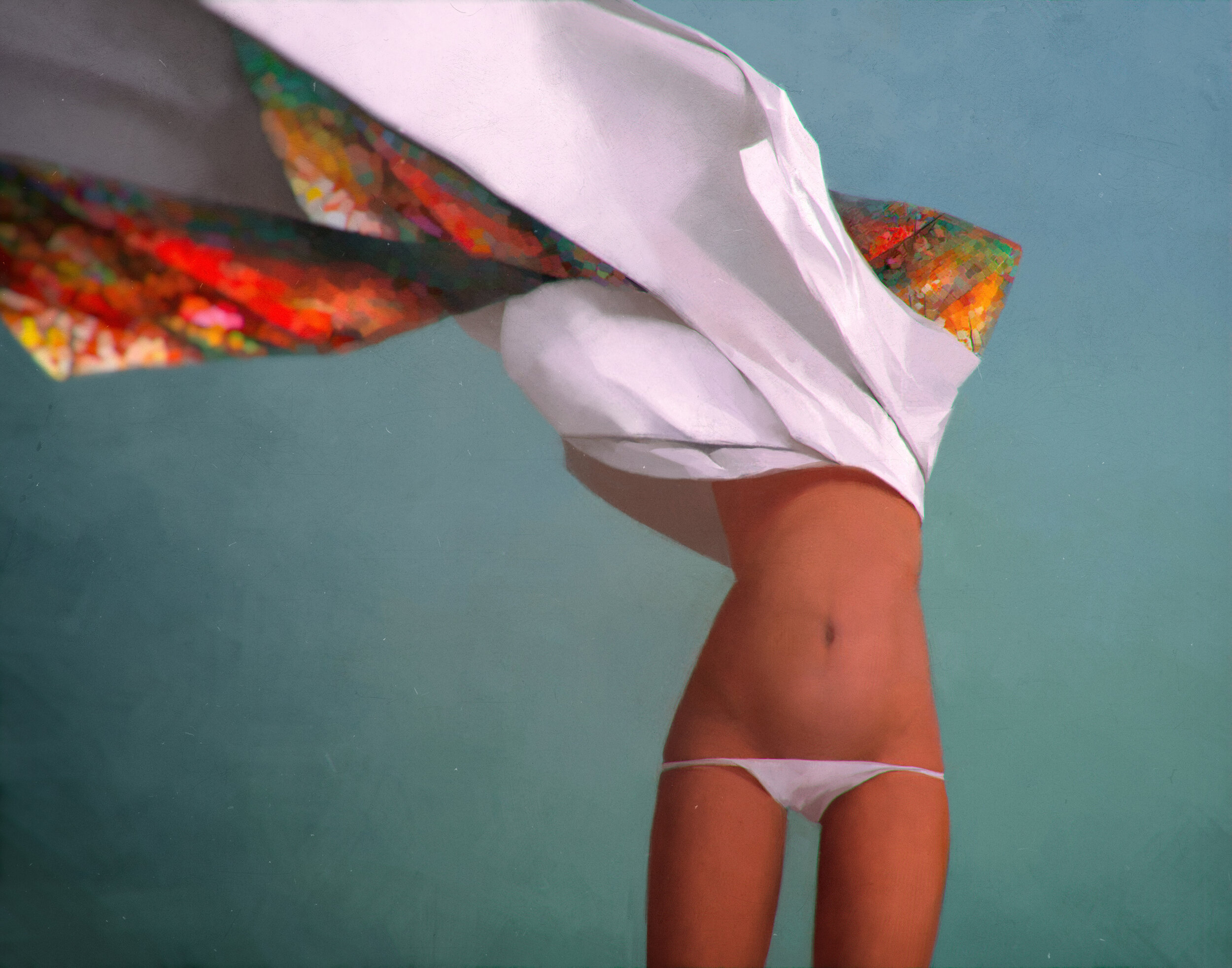
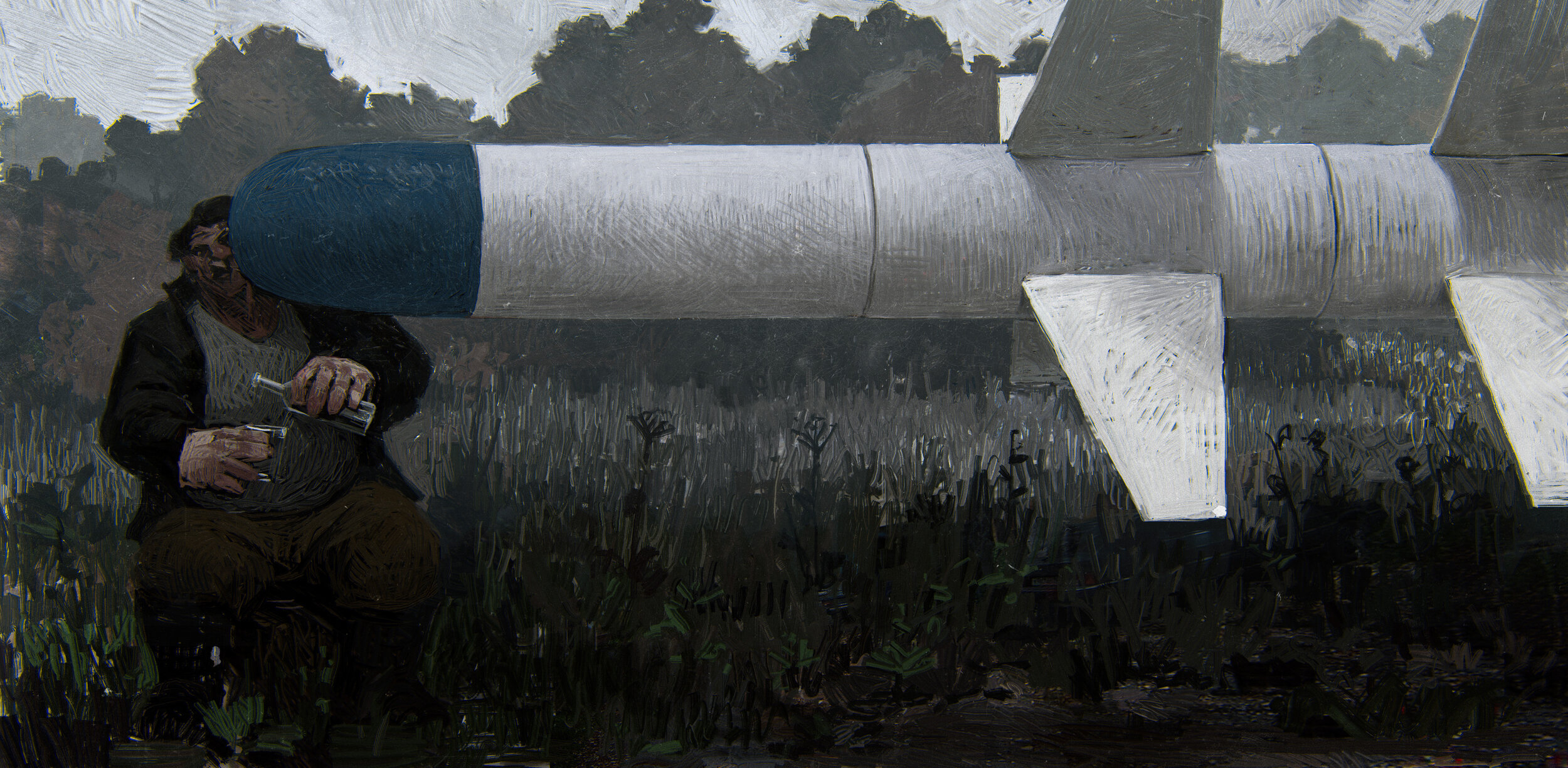
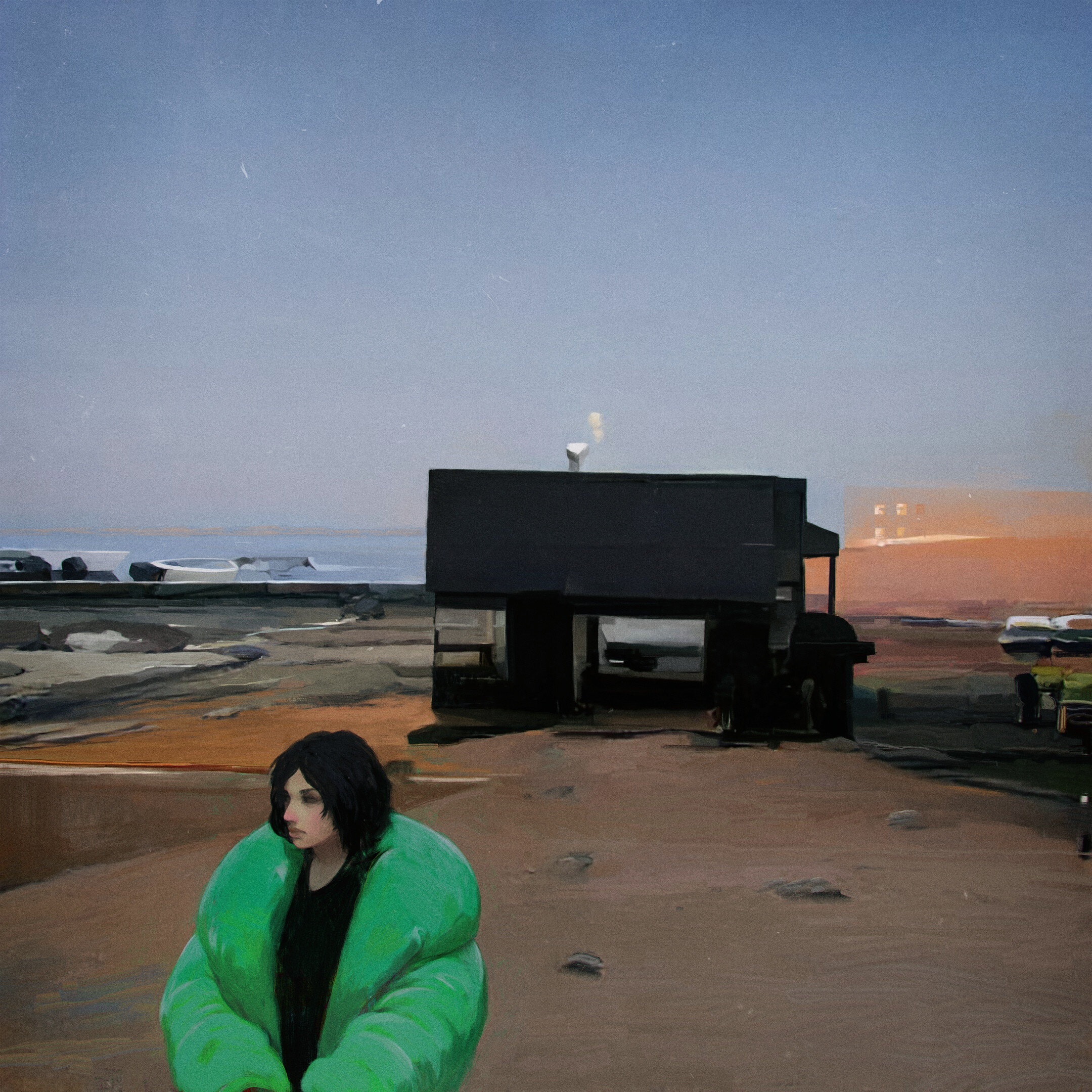
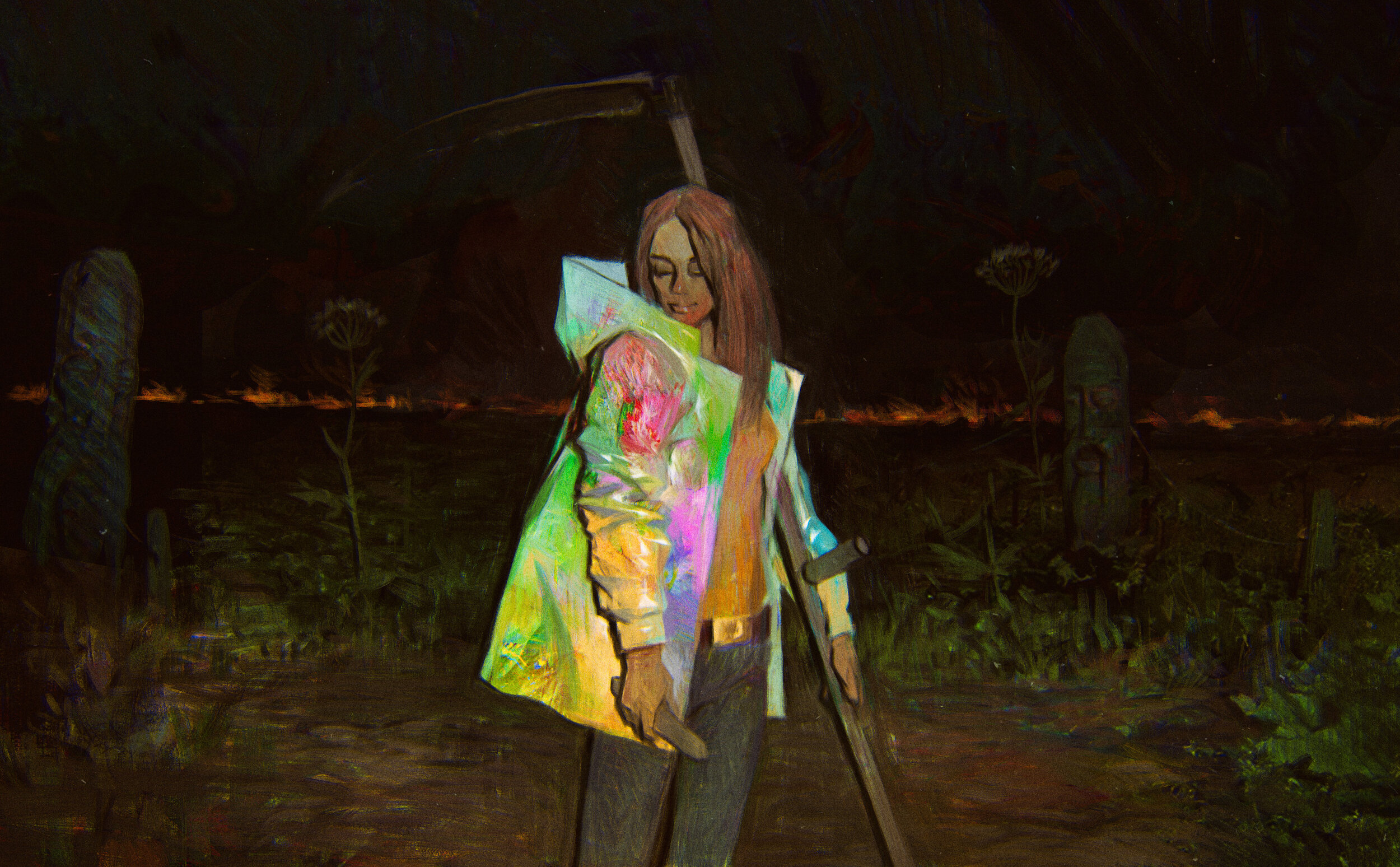
The idea behind POPSIKI is to reflect internet culture as well as drop collaborations with popular artists and platforms and create a funny marketplace for Crypto enthusiasts. Ilya will create only 1000 unique jumpers, drawn frame-by-frame.







DESIGNCOLLECTOR logo by Turbomilk, 2003-2006
It could be a perfect age test if you can remember the first logo of Designcollector I created in 2003, that was later pixelated by @turbomilk studio and even unintentionally mocked by @Mr_Bingo while he signed me a book at @OFFFest
Now the logo is immortalised with NFT POPSIKI
Moscow-based artist Natalie Rukavishnikova creates works in a significant illustration manner with calm sepia palette that captivates the viewer with her visual stories.
After consistent efforts to perfect eyewear design, GENTLE MONSTER presents the Nano Collection campaign ‘The Circle of Life’. Through a collaboration with visual artist collective AES+F, the art film ‘The Circle of Life’ was created simultaneously as a pursuit of our origins and of our future, where we reach out to fantastical creatures as if for our dreams and where our life has no beginning or end.

GENTLE MONSTER invites you into an imaginarium where surreal creatures and strange structures float in the sky, and where Nano Collection’s bizarre products evoke a rush of emotions.


SPACE10 is a research and design lab, on a mission to create a better everyday life for people and the planet.
Exploring societal, technological, and environmental shifts likely to influence people’s lives in the coming years, they wanted to visualize the different ways that climate crisis is manifesting itself, through climate stressors.

“To support their different projects and articles relating to the crisis, these visuals will then be used to highlight in a beautiful way, nature we all love and remember.
Our task was to create visualizations of three phenomena: wildfires, floods, and droughts. The focus was on how these processes unfold over time and, eventually, become massive forces that alter entire ecosystems.” - says Media Work

“Visually, we looked for the balance between aesthetically pleasing and alarming — we had to show the phenomena as something important that is happening here and now, although, not to create frightening catastrophic images that would leave the viewer hopeless.” - continues Media Work
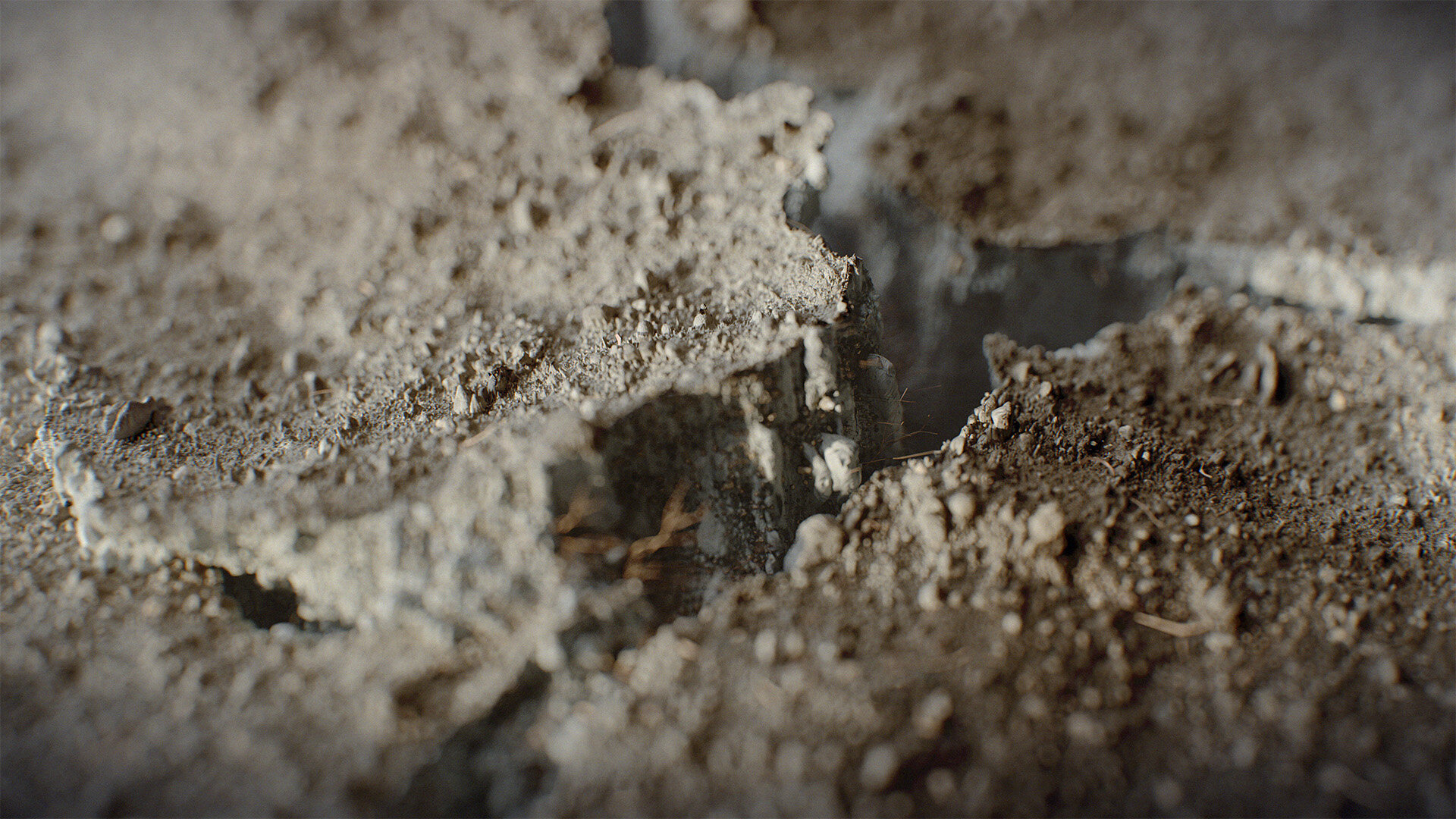
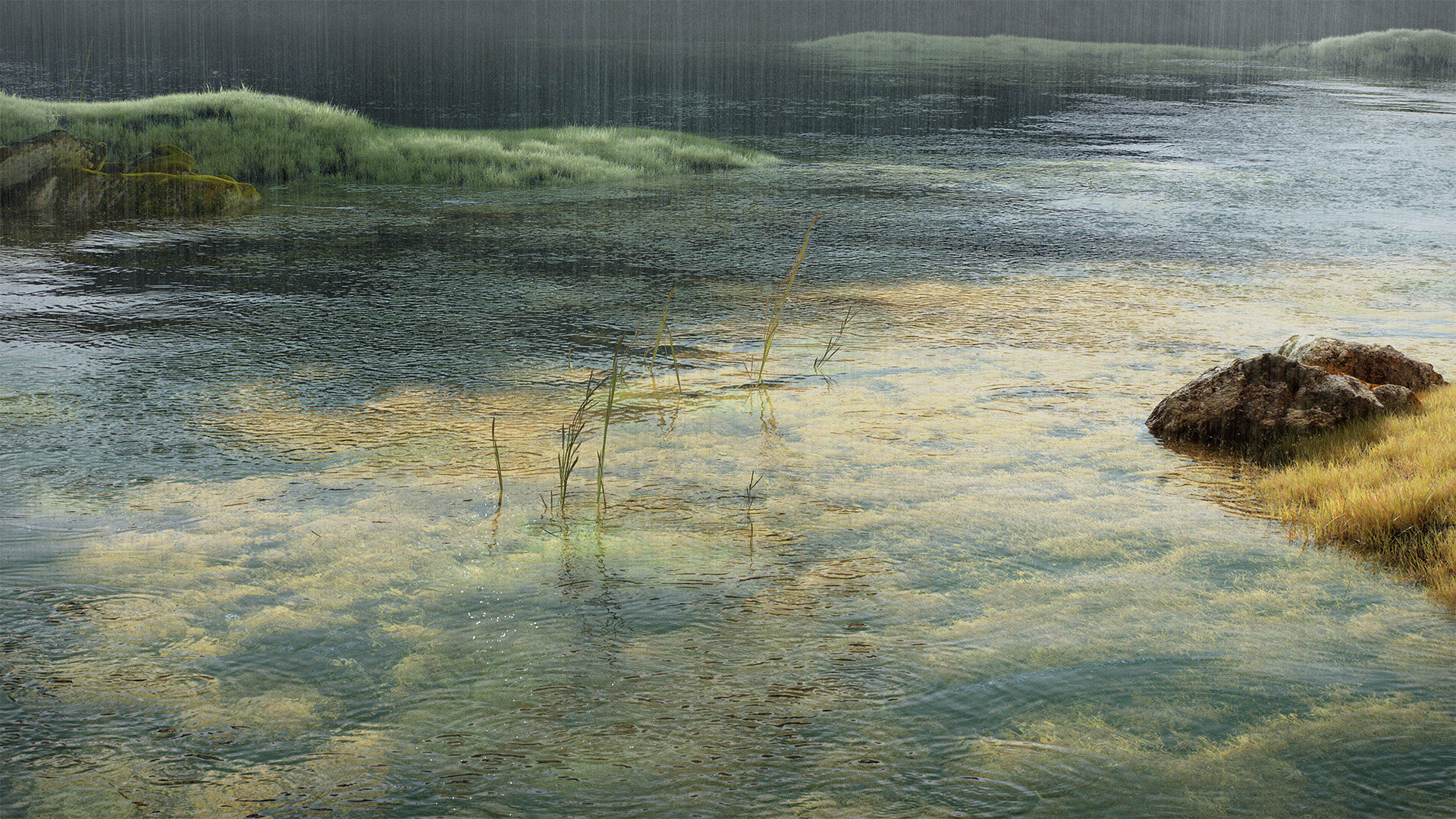
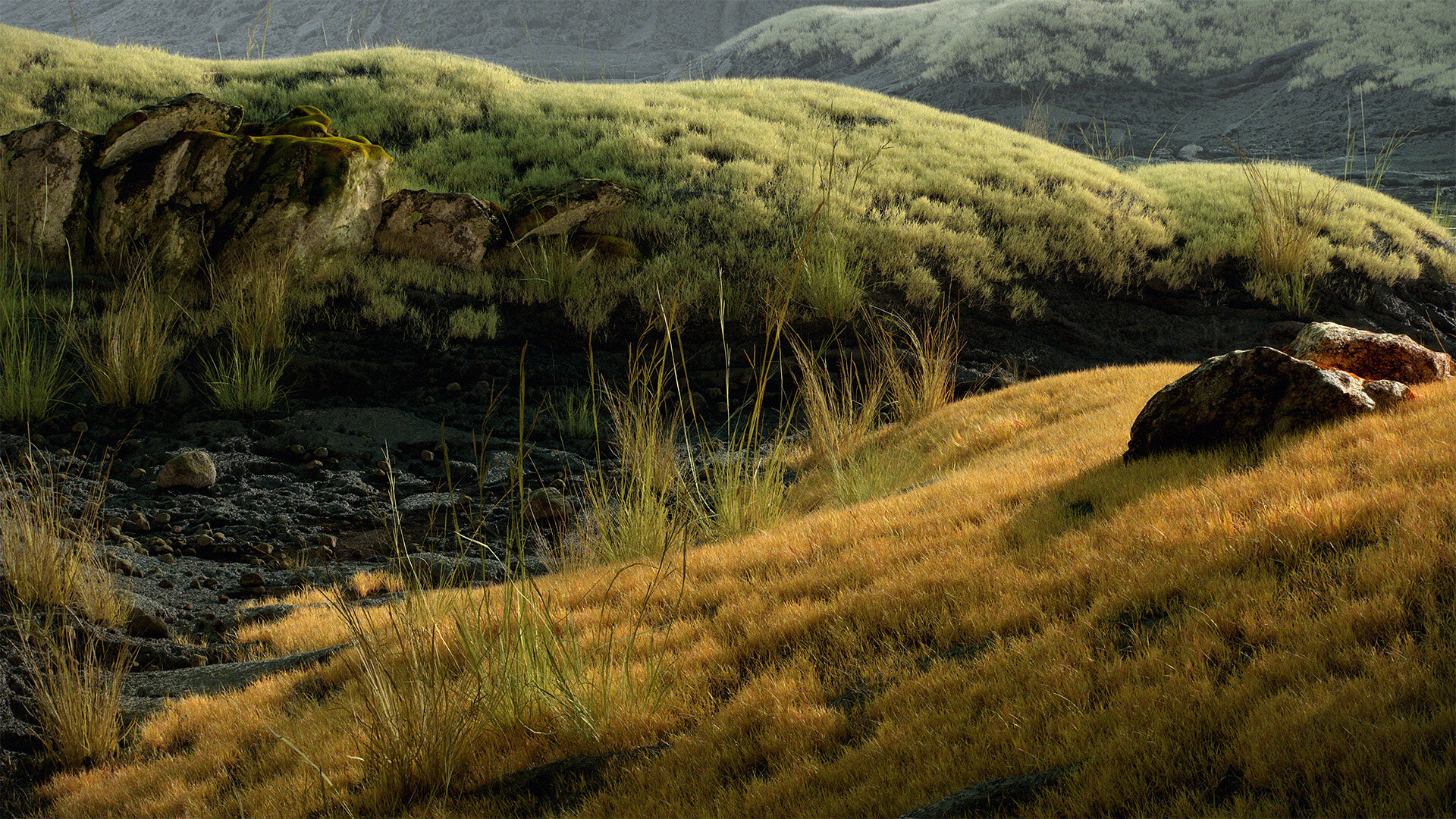

Meet the Ksoids, an impossibly addictive NFT collectible that not only creates a world all its own, but also helps protect our world.
Each one of these curious creatures was generated by a hand-crafted algorithm and then lovingly selected by creator Danil Krivoruchko to join an elite group of 1,000 Grade-A Ksoids, all available to the discerning investor.
The first few drops will be sold on the NFT marketplace OpenSea, and available in randomly selected packs of 1, 4, and 10. It’s also possible there will be a few easter eggs thrown into the mix, but that’s all we’re saying for now.
We reserved an original release format for a special #collectable. A group of 1,000 Grade-A Ksoids dropping by the pack! Randomly selected by an algorithm, each pack has 1, 4, and 10 Ksoids. Available on the #NFT marketplace @opensea, the first batch of 100 KSOIDS dropping today! pic.twitter.com/gd6OpSD6Pf
— One Thousand Ksoids (@ksoids_home) April 22, 2021
Clap your hands! Mind your head! Make some noise! Here they drop! KSOIDS! #NFT debut is tomorrow on @opensea! Made in 2013 by award-winning studio @myshli_com finally coming as NFTs! We will bring more news out about the KSOIDS cutielicious project! #NFTcommunity, stay with us! pic.twitter.com/y7L6ECj5rN
— One Thousand Ksoids (@ksoids_home) April 21, 2021
Thankfully adopting a Ksoid doesn’t have to mean decimating either their habitat or ours. In an attempt to counteract NFTs’ negative environmental impact, Ksoids will work to reduce their footprint through the purchase of carbon offsets.
Not only that, but 20% of all profits will be donated to the Orangutan Outreach, an organization dedicated to protecting orangutans in their native forests, while also caring for orphaned orangutans.
Brooklyn-based Myshli Studio was founded by Danil Krivoruchko, a motion designer, director, and visual effects artist. Krivoruchko's NFT works are already well-known to digital art collectors, having been featured on platforms such as KnownOrigin and Foundation; the Ksoids will mark his premiere on OpenSea. His digital art work is also well-known in the film community. Last October, a collaborative group of designers and artists under the direction of Krivoruchko used 3D-imaging to transform the sci-fi novel "Blindsight" by Peter Watts into a short film. The movie has won over a dozen awards, including the Best Animation Award at the Miami International Science Fiction Film Festival. In the past 17 years, Danil has collaborated with clients such as Apple, Nike, Boeing, Verizon, and Intel, to name a few.

{Guild of the Fallen} is the upcoming NFT project dedicated to the artistic view on myths and legends of a fallen angels.⠀The first angel is Gaderel and all other angels to be released later this year. Gaderel cast down from the heaven to earth by higher powers, and is frozen in the atmosphere in a dramatic moment of the triumph when some Gods win over others.
“We decided to move away from the existing religious overtones and create our own story, changing both the looks of the characters and their characters, but preserving the eternal concept of the struggle between Good and Evil, Light and Dark.”
Credits:
Project created in collaboration with @melnukoff
Sound design: @ivankomelskikh
Russian digital artist Kirill Maksimchuk known by collaboration with us on Digital Decade 5: Cyberia exhibition and DJ Carnage cover art shares his latest cyber works and jaw-dropping reel and step in to the NFT scene with his Cyberia citizen “Cybermancer”
Time to refresh our #tattoos collection with a new masterpieces from Moscow-based ink artist Ilia Zharkov
An entrancing short film by designer and artist Rus Khasanov (previously) fuses multiple optical tricks into a single work.
“The hypnotic footage utilizes pareidolia—the inclination to see an object where it physically doesn’t exist—while referencing heterochromia iridum, a fairly common condition in which a person’s irises are multi-colored, sometimes in the forms of spikes radiating around the pupil or swirls that split the tissue with different hues. Khasanov’s rendition mimics that phenomenon through saturated droplets and innumerable veins that plume outward.” via Colossal
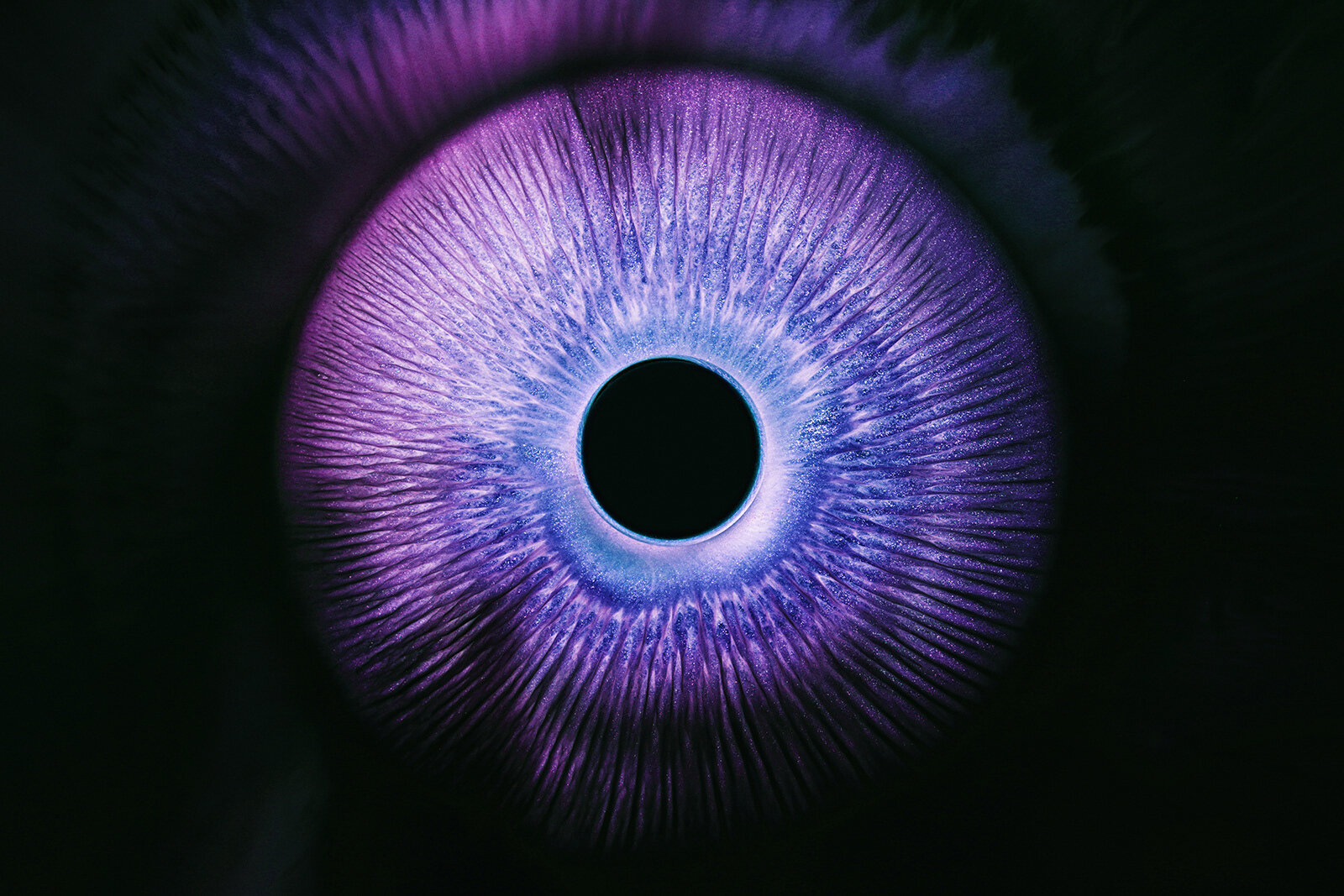
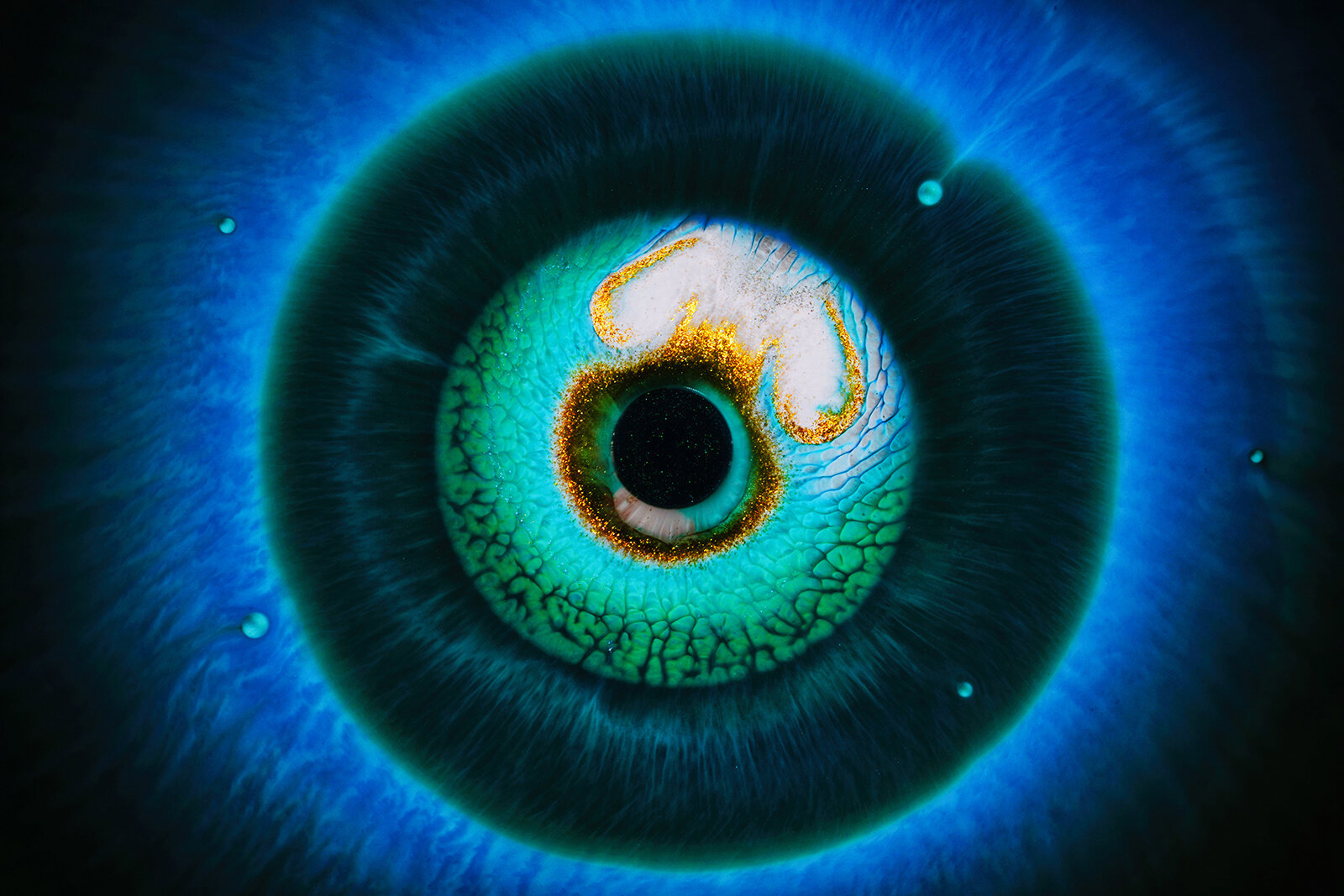

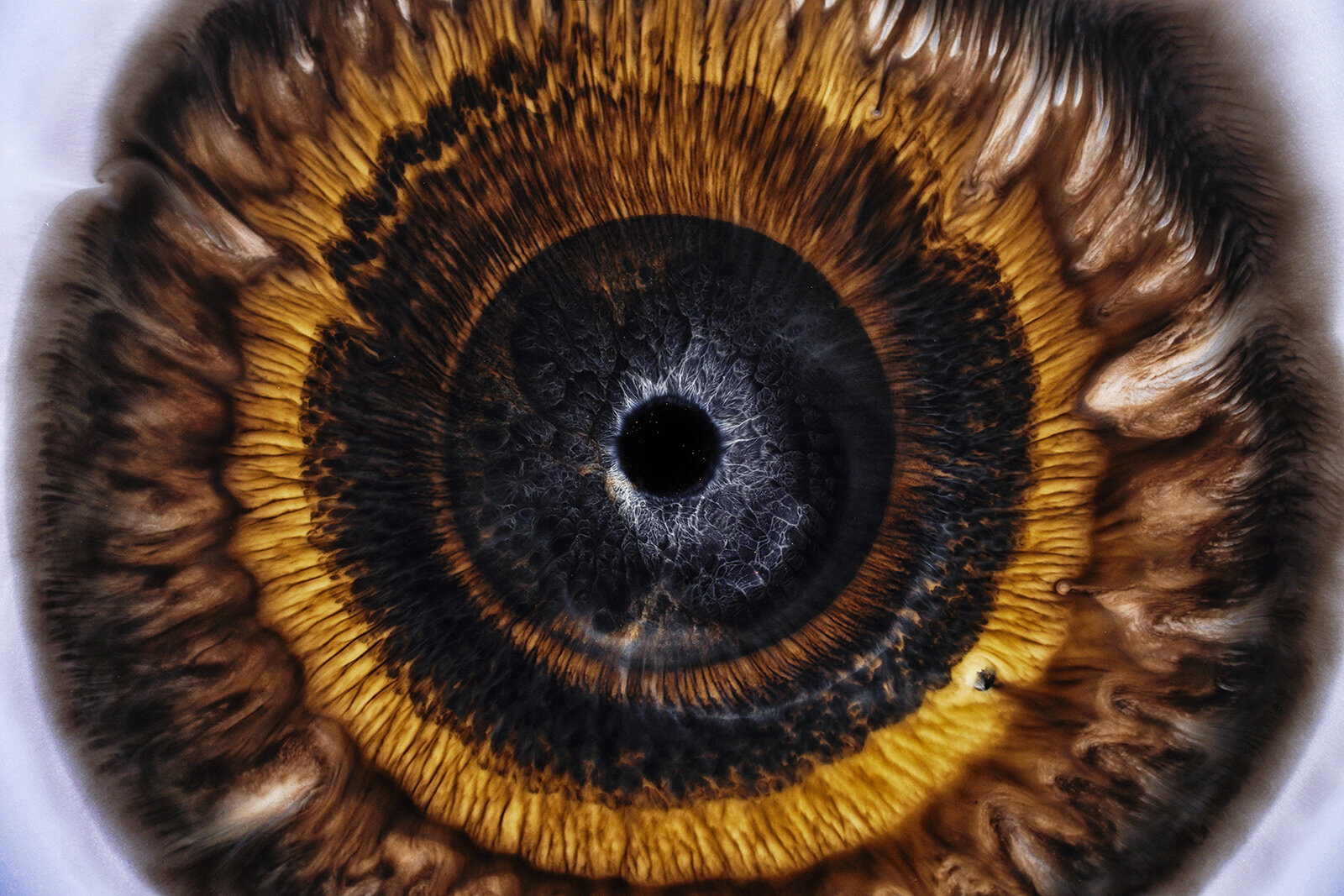
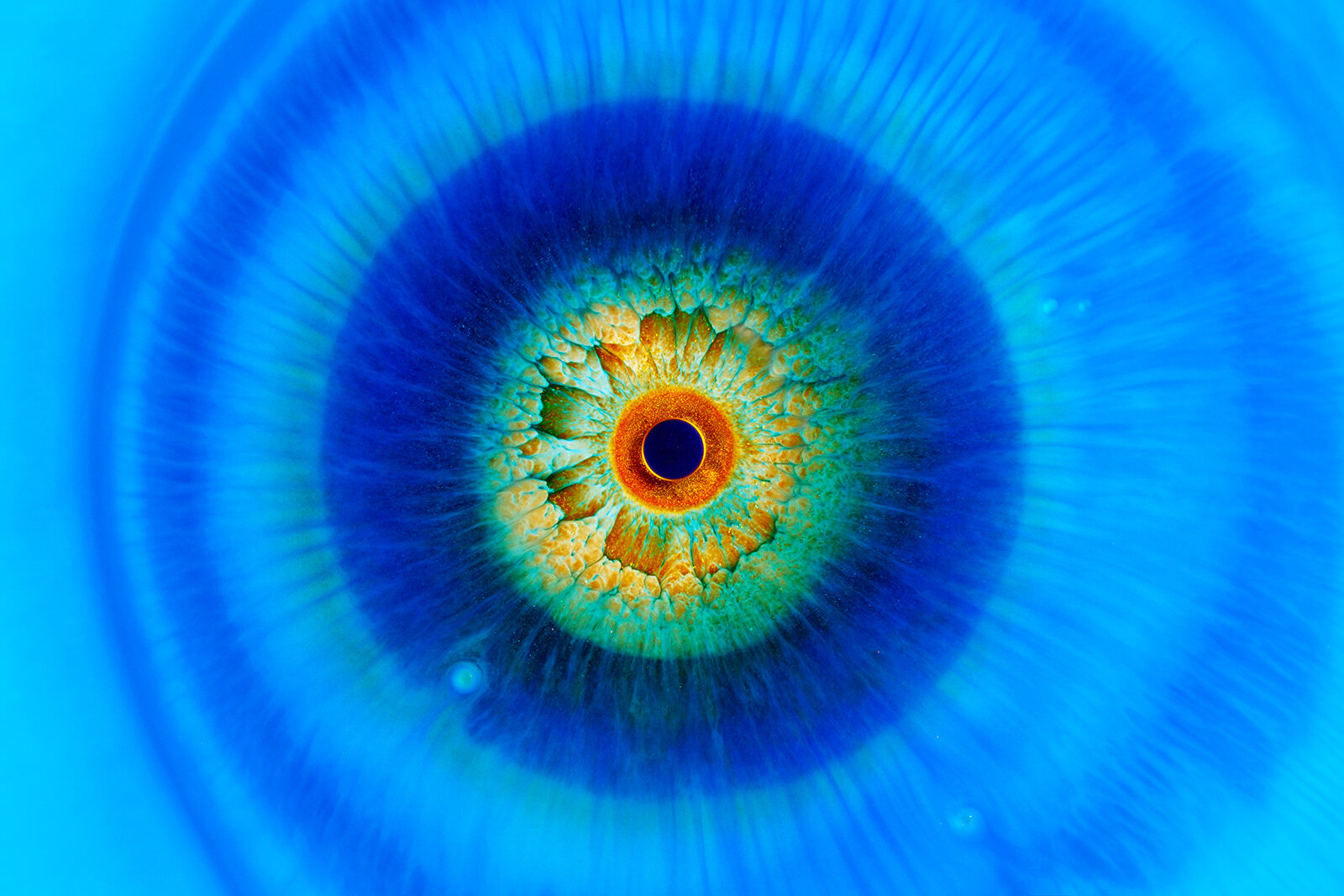

Saint-Petersburg, Russia based artist Edgar Invoker creates quite surreal and experimental artworks by mixing digital tools with airbrush, monotype, liquid acrylic, masking. Practicing techniques contributing to lucid dreaming, he fixes the experience and understanding in the form of paintings. The main technique is to create an abstract form in the form of a blot or a paint print, followed by a "manifestation" of a specific image using a set of techniques.



Illustrator and dotwork artist Sergey Svetov shares his dark skills perfectly suited for skin neither paper clashing to eternal instances: Beauty and Death
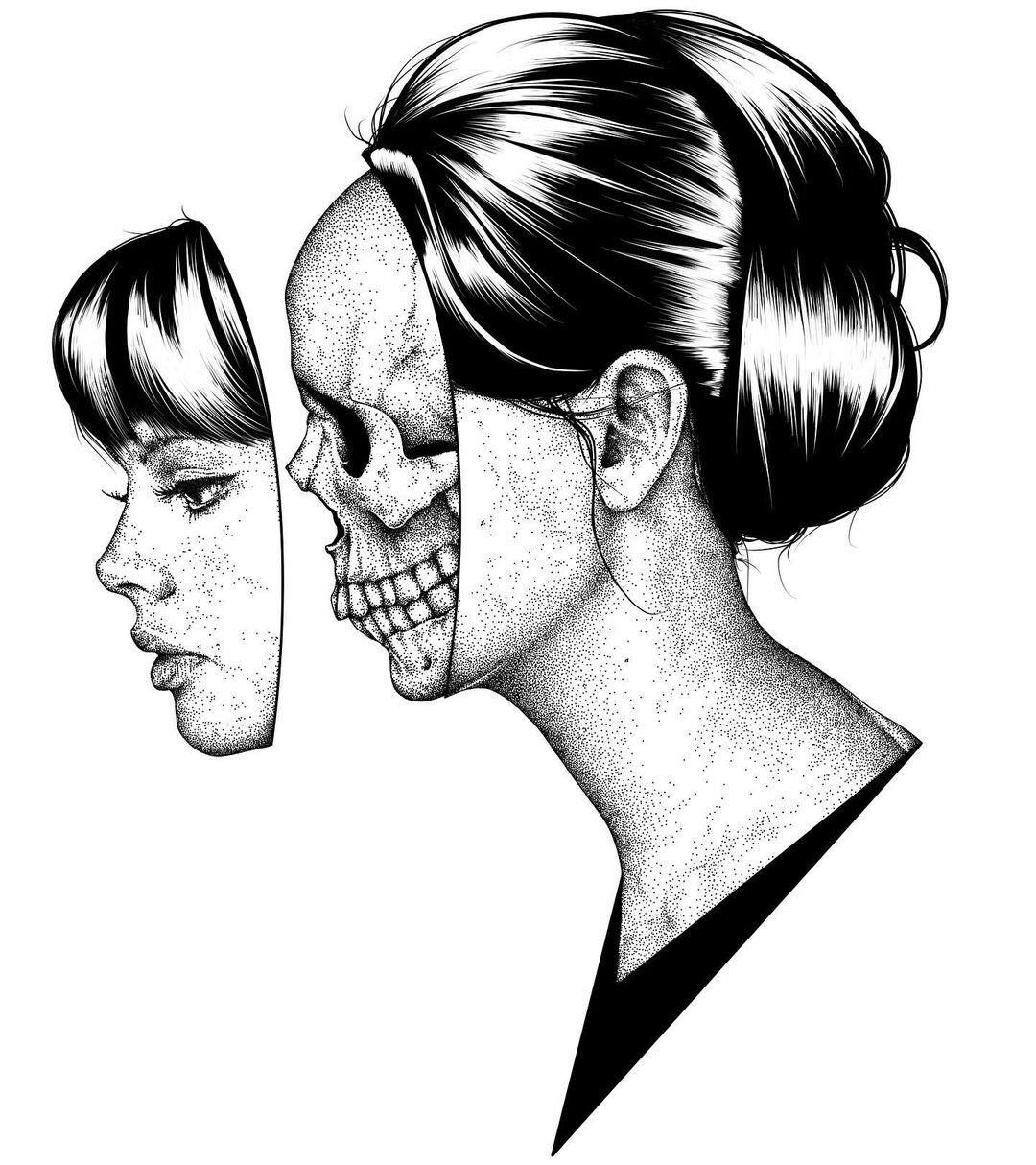
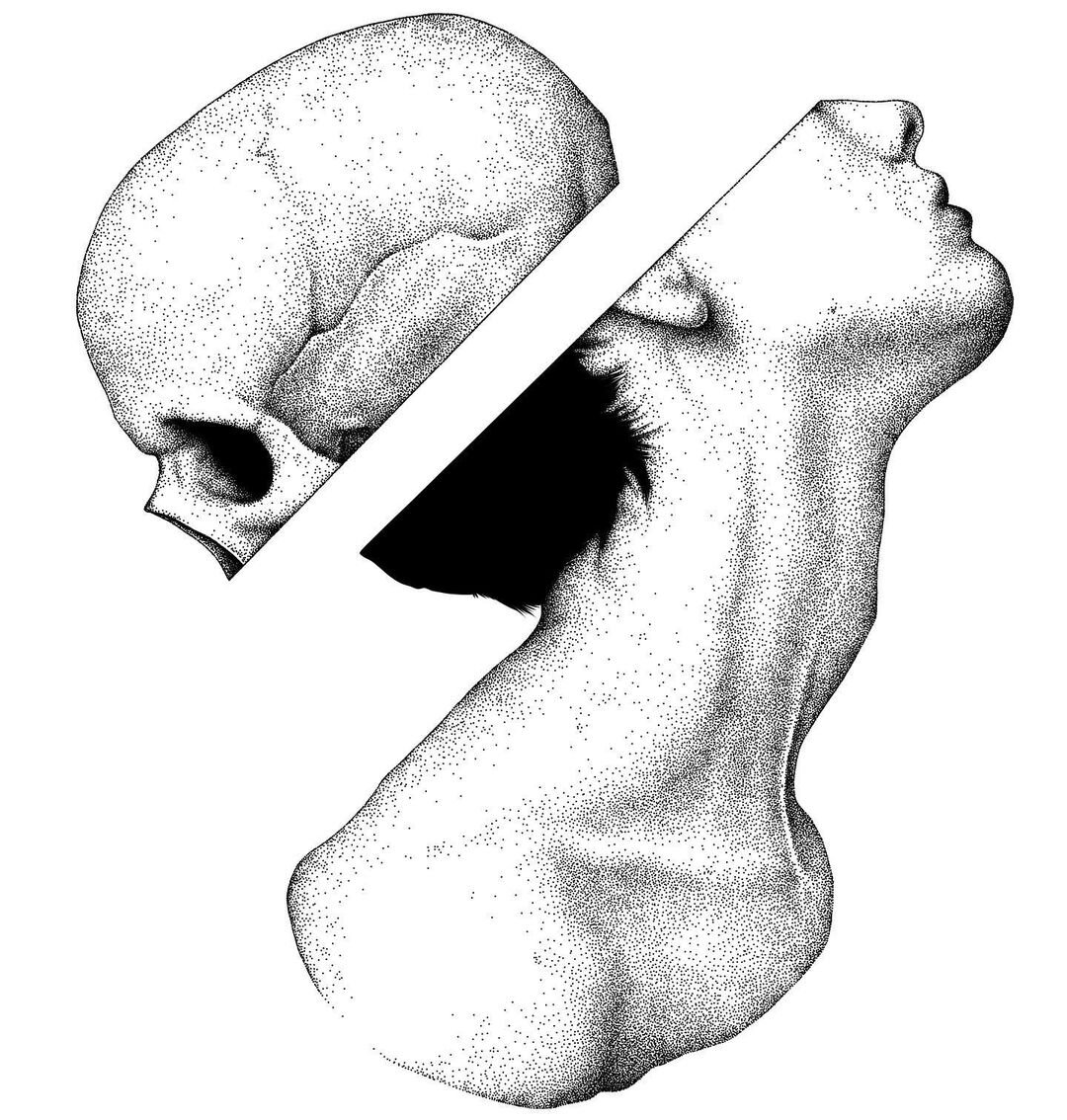
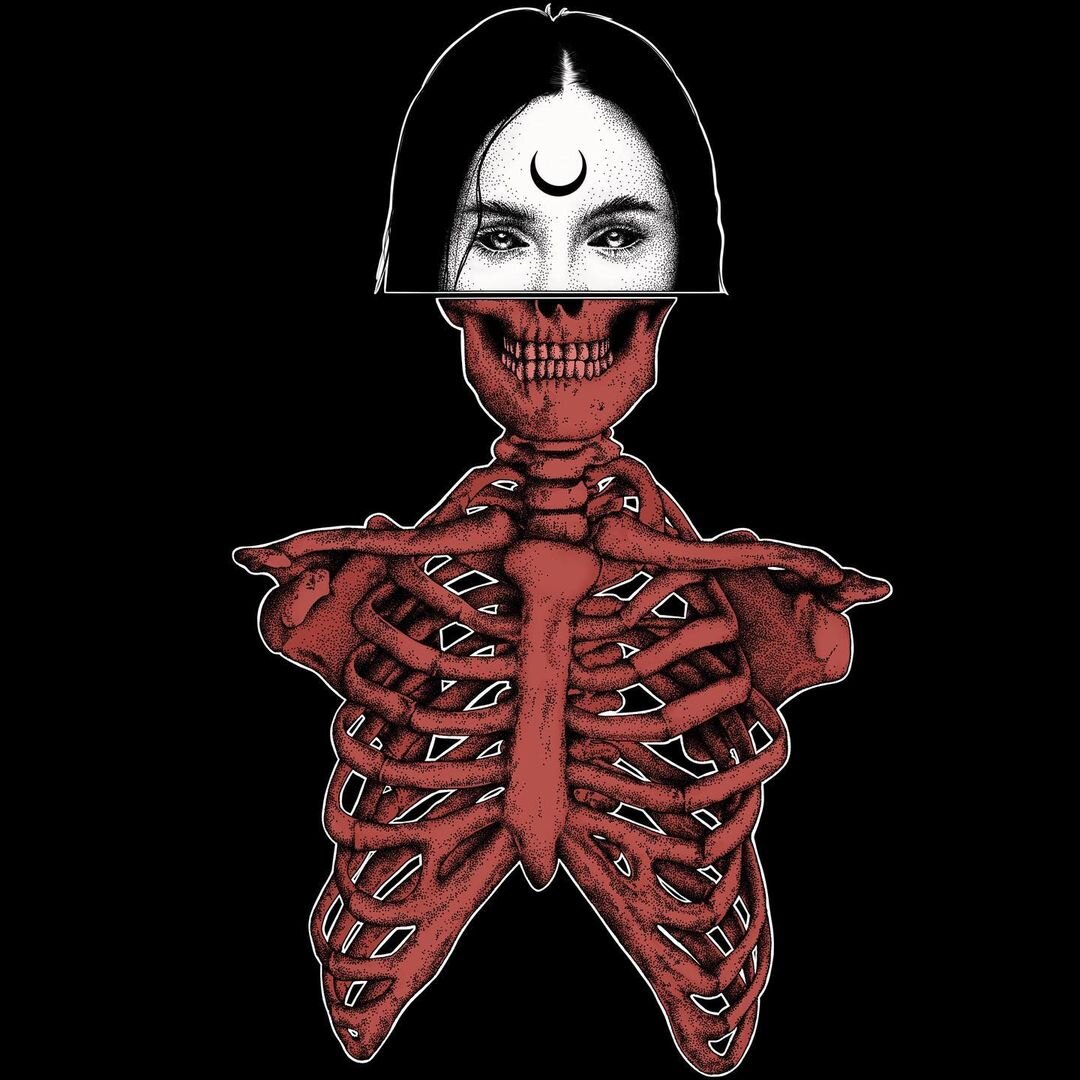
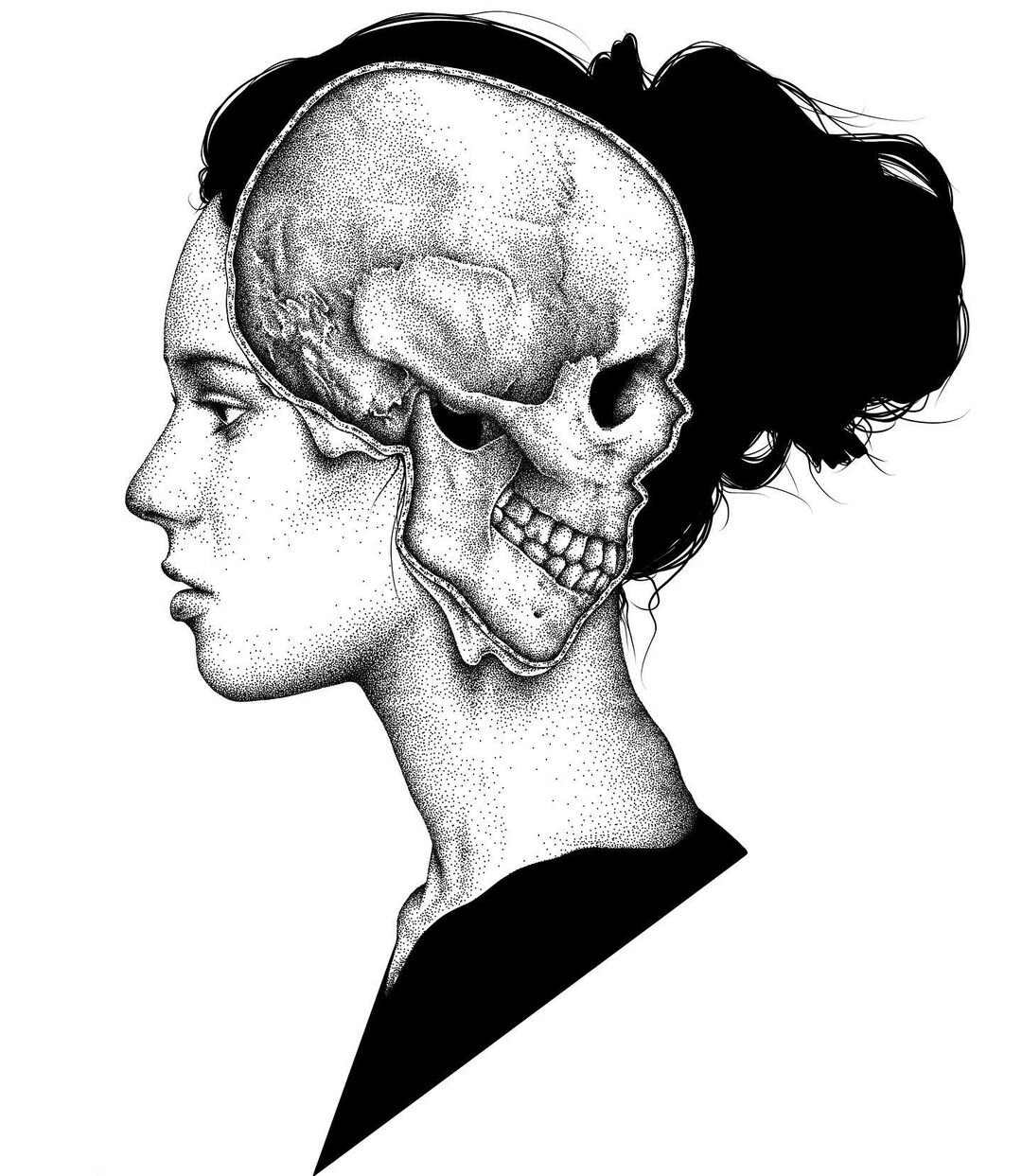
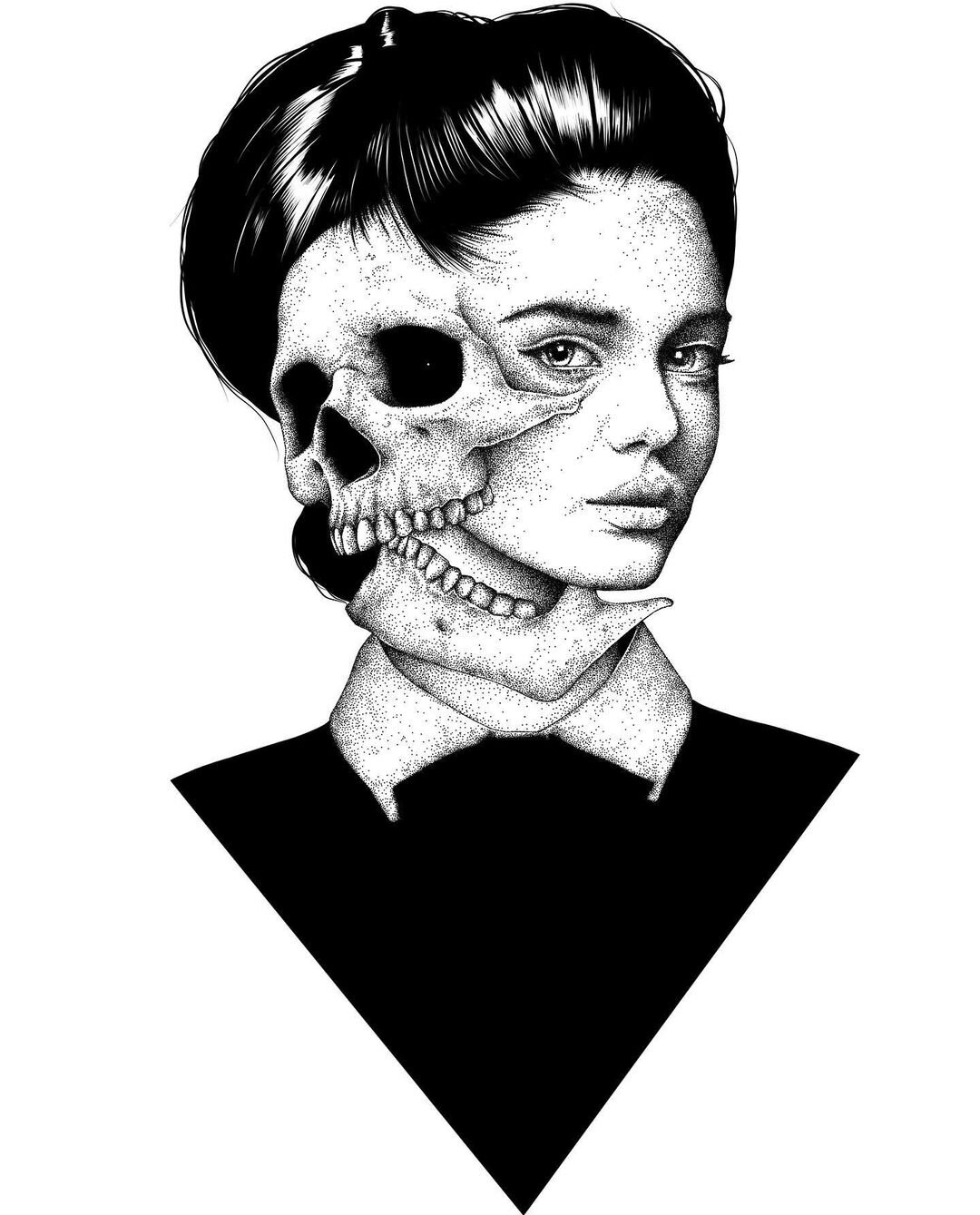

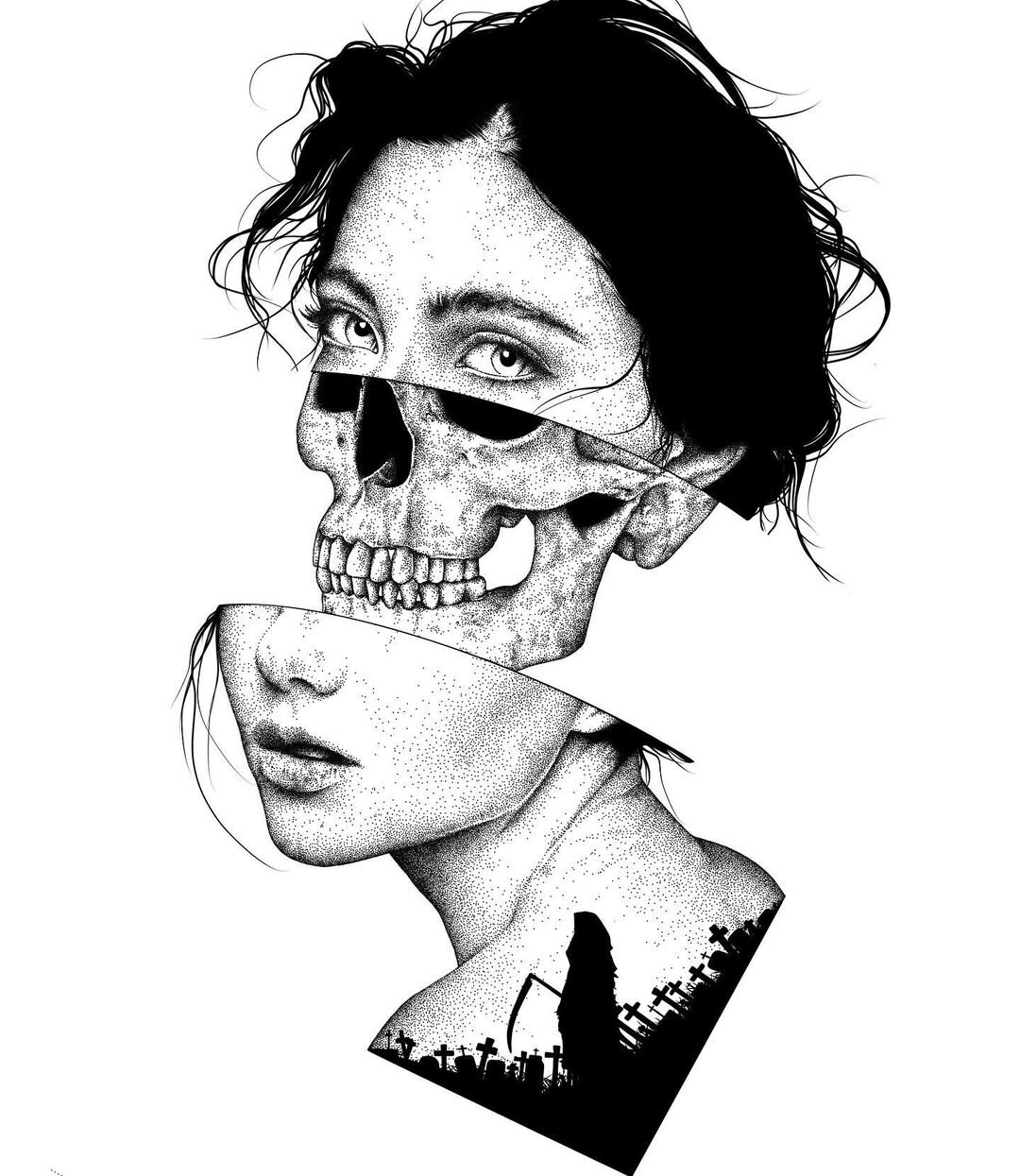
This series of video artworks is a metaphysical trip to another reality between our vision and perception. In accordance with the postulates of postmodernism and legacy of Derrida, the artist plays with the language of color, providing the opportunity to rethink our links with the current world through kitsch and low fidelity. Macro video recording and experimental sounds in videos are 'entry points' to the new stage of postmodernism where a viewer can melt a metaphysical body and disappear to leave marks in the internal world.
The collection name is derived from the words "macro", "experiment" and "sound".
WARNING: These videos have been identified to potentially trigger seizures for people with photosensitive epilepsy. Viewer discretion is advised.

Azamat Akhmadbaev (b.1991, Karachayevsk) is a visual artist who lives and works in Saint Petersburg, Russia. He works across many disciplines including painting, photography, video and digital art. His artworks operates in the gap between glitch art, abstraction, minimalism and graphic art. Also he is a founder/editor-in-chief of dontpostme magazine - a magazine about contemporary art. Private collections in Russia, Spain, the USA, the UK and Poland.
DONTPOSTME (@dontpostme_magazine)
Since 2012, Azamat Akhmadbaev and Zulya Kumukova have published an online magazine, DONTPOSTME featuring interviews by outstanding contemporary artists. The latest interviews are featured on Instagram; interviewed artists include Anne Vieux, Michael Staniak, Matt Mignanelli, Gergo Szinyova, Lee Bul and Jenny Brosinski.

The Digital Decade SE 2020 collection is a selection of digital artworks curated by Designcollector Network. The collection and connected events, released in 2020, are the latest iteration of Digital Decade which has previously been presented as a series of Phygital Art events in London, Barcelona and Saint Petersburg, featuring more than 150 artists in total. Starting from 2013 artists have been invited to respond to the geopolitical, environmental, social changes taking place today in the digital age
Andrey Remnev — modern Russian painter. The greatest popularity in the art world Remnev has gained for the paintings with visual motifs of Russian provincial life performed with a mix of late renaissance composition, ancient icons portraiture and Russian art of the 18th century.
